This is the story about a ship, a pioneer and development of technical diving in the 1970’s
This is the story about a fantastic ship built in 1897 that sunk in 1911 in Lake Superior in Canada. I was fortunate to get in contact with diver and archeologist Scott McWilliam. Scott took time to introduce me to this fantastic wreck lying at 80 meters. He dived it in his early diving career on air (!) and finished his adventure with a survey in 1993. In the 30’s a search was carried out and hard-hat divers tried to find the wreck.. The story will take you all the way from the beginning to the End, an amazing story! I would like to give my warmest regards to Scott who wrote me this story and I also want to thank Fred Broennle for his amazing adventures and hope he will be able to read this story!
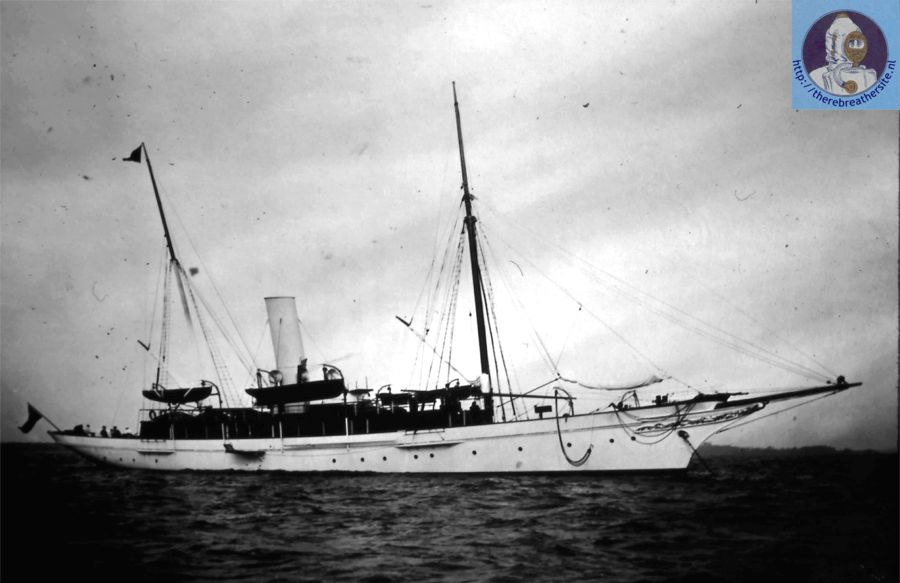
History
Ramage & Ferguson Ltd., Scotland, built the Gunilda in Leith, in 1897 according to the plans of designers Cox & King.
Her overall length was 195 feet (59.4 meters), her breadth was 24 feet, 7 inches (6.25 meters) and she had a draft of 12 feet,
six inches (3.8 meters) with a gross of 385 tonnes. The Gunilda was powered by a triple expansion 27-inch (68.6 centimetres)
stroke steam engine fuelled by two 160 pound pressure turbine boilers and could make 14 knots per hour.
At the time of her demise the Gunilda was owned by an affluent New Yorker by the name of William L. Harkness.
The great lakes are not known for their forgiving nature and all too often frugal or ill-informed decisions result in disaster.
Harkness chose not hire a local pilot to guide his ship through the various islands and shoals of this part of the lake.
After hitting some rocks, all the prestigious passengers where safely brought to shore, leaving their personal belongings in their respective rooms.
Harkness refused to pay for a second Tug and the Gunilda sank at the base of the pinnacle, in 270 feet (80 meters) of water. The date: August 11th 1911.
Divers were not able to find any trace of the Gunilda 1904 or 1905 and Lloyds of London paid out on a $100, 00.00 policy.
The family valued the total loss at $132, 00.00.
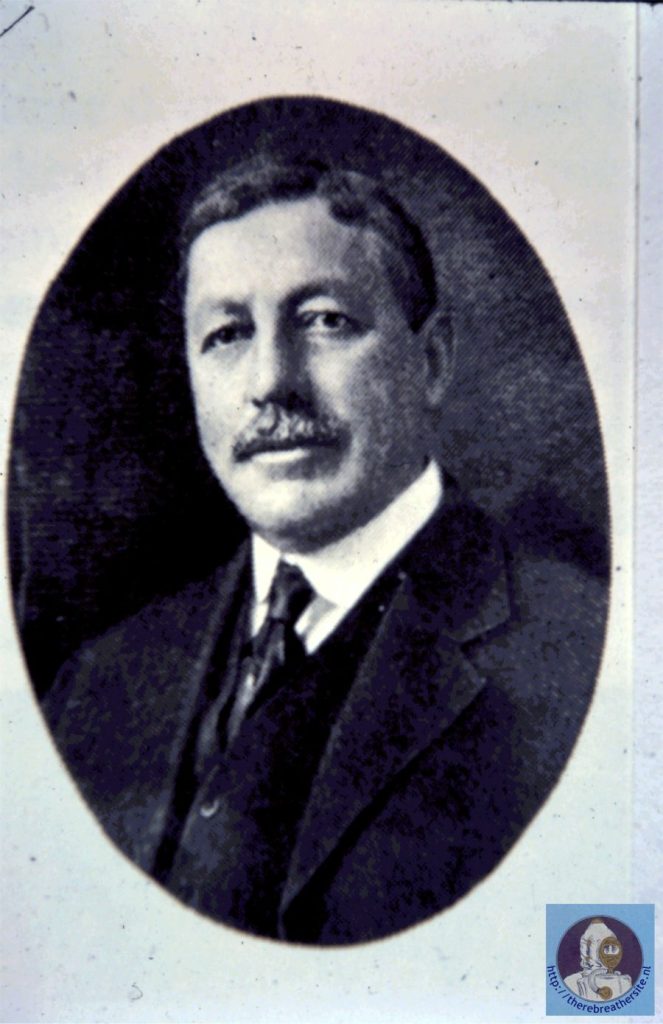
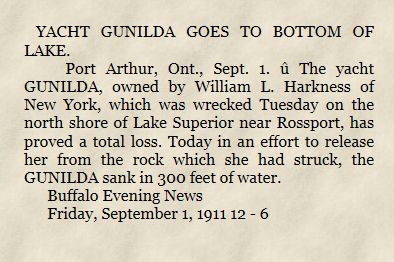
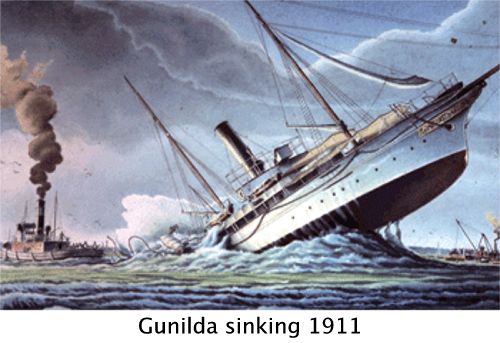
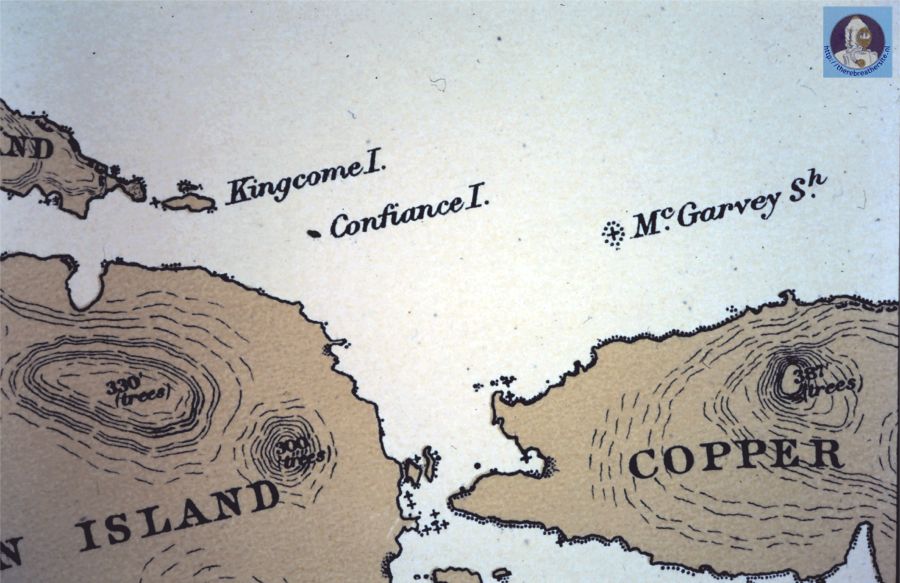
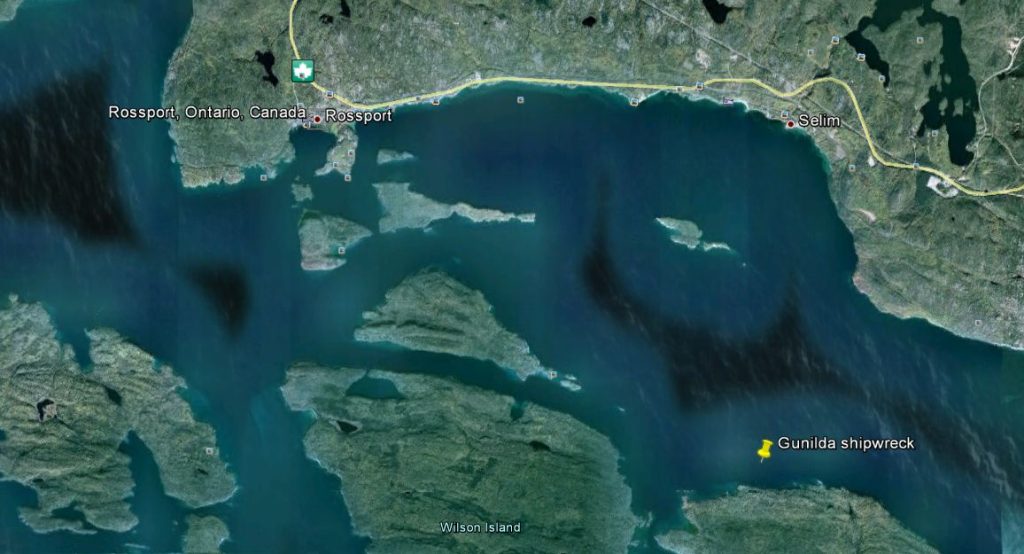
This great video was posted by Brian Nadwidny and shows how the ‘lady’ is today. Great movie thanks to Brian!
Gunilda, written by Scott McWilliam
The Gunilda was never forgotten about. It sank during a salvage effort. Hard had diver Ed “Doc” Fowler made an effort to locate the vessel in the 1930s but failed.
My father Keith McWilliam and I would go fishing with Doc. He was retired by then and he told story of his life time as a commercial diver on the Great lakes.
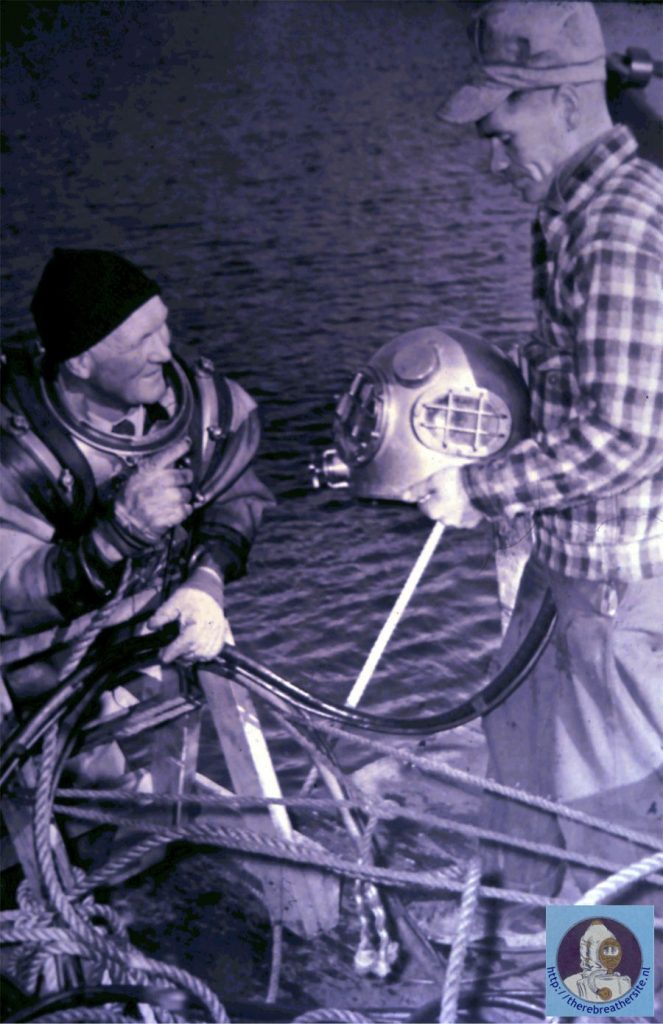
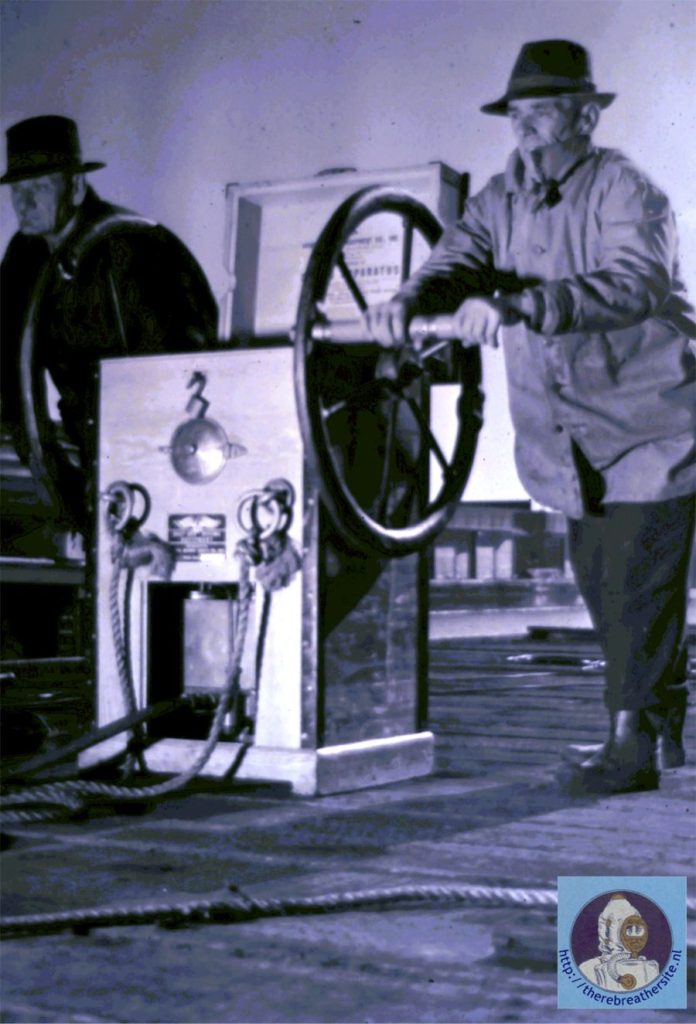
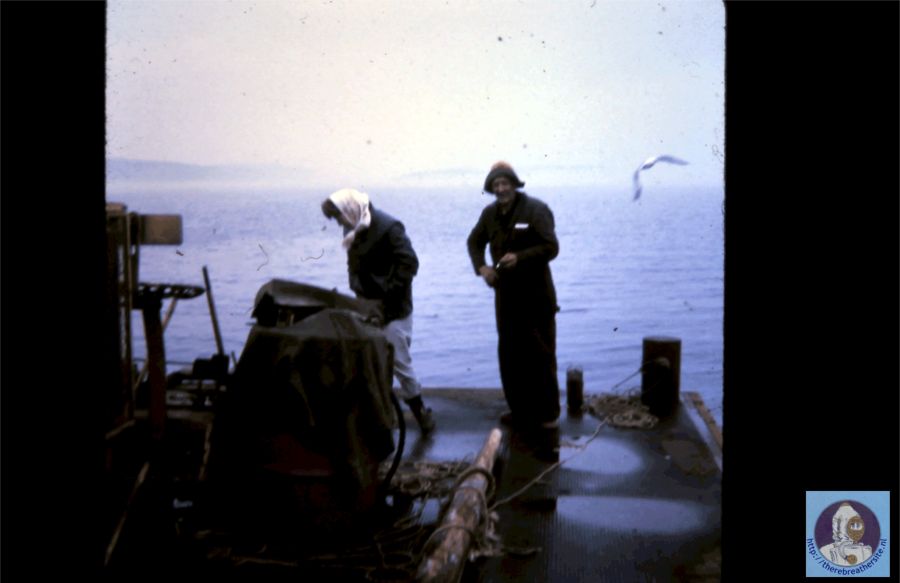
He had retired and planned to raise the Gunilda by winching it to the surface. To that end, he had purchased a barge from the railroad. Both Ed Flatt and Ray Kenny were long time Rossport residents and knew how to find Gunilda.
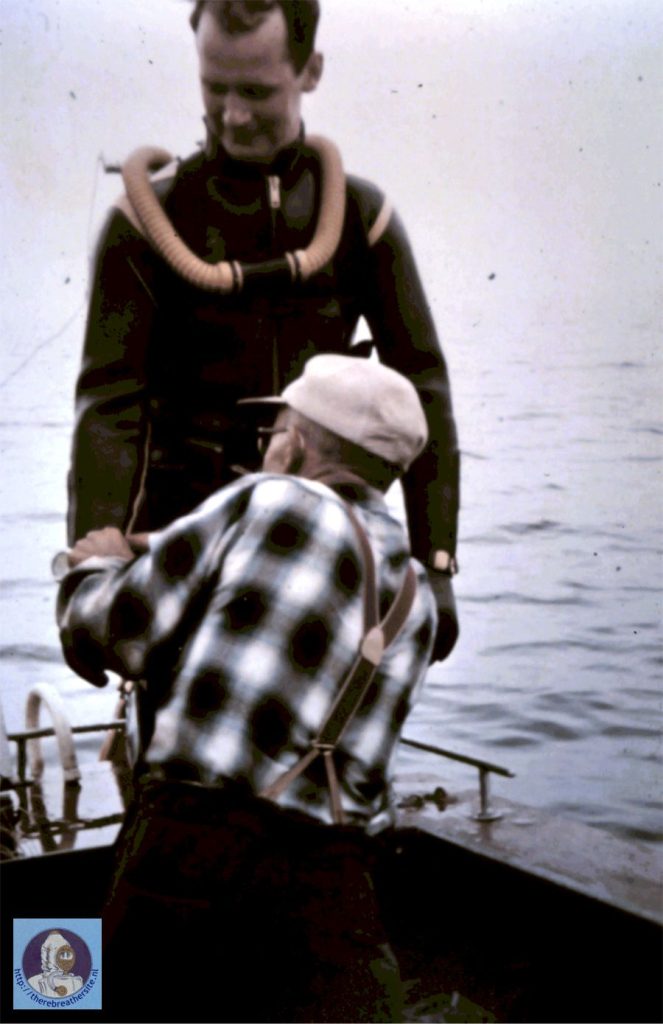
Other diving efforts to reach Gunilda were made. Chuck Zender was the first diver to reach Gunilda using SCUBA in 1967.
He published a couple of magazine articles and suggested that $3,500,000 in valuables was on Gunilda, highly speculative.
In the 70’s there was one diver who had the bug for rebreather diving like no one else.
Fred Bronelle formed a company, Deep Diving Systems to engage in Raising the Shipwreck Gunilda . . .
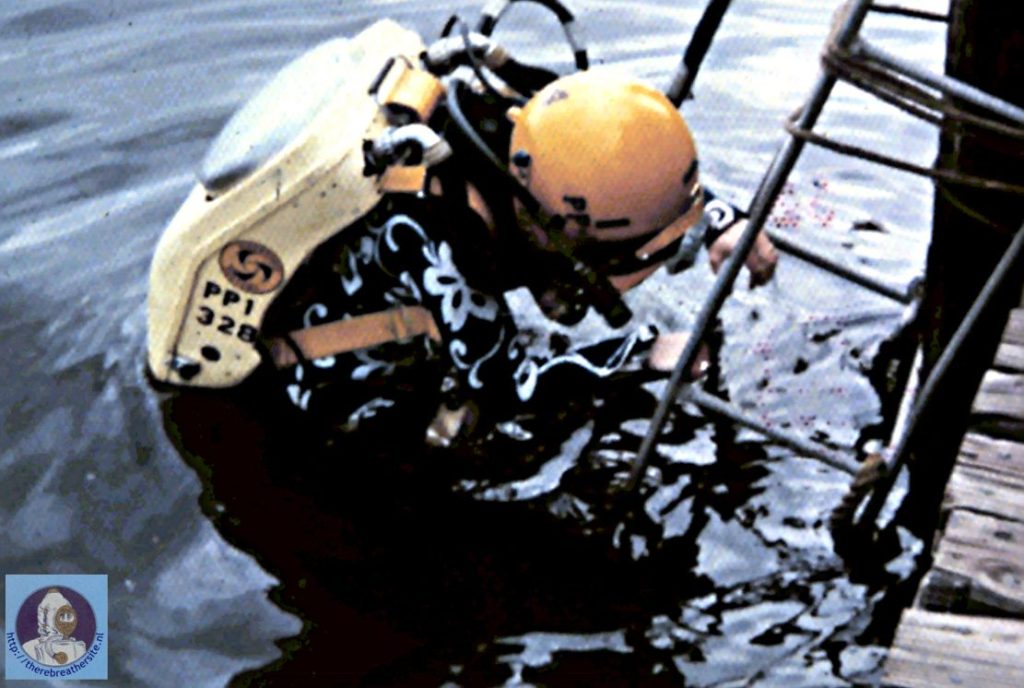
Deep Diving Systems built the tethered submersible Constructor, with an operational depth of 3,000 feet and a lock out capability to 1,500 feet.
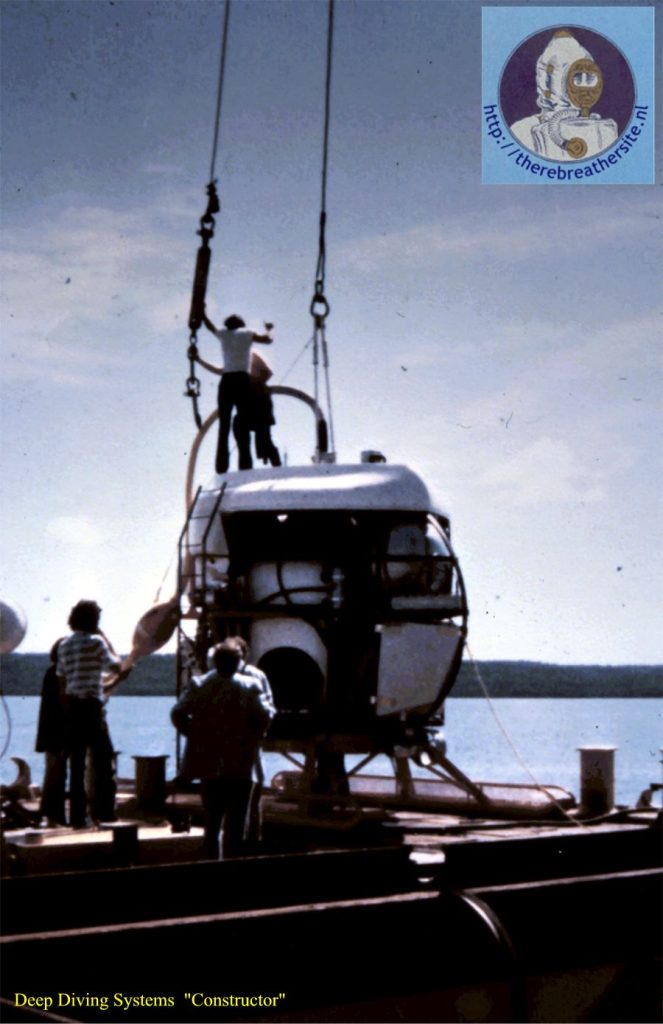
In August 1970 Fred Bronelle and his dive partner Charles King Hague went out to dive Gunilda. August 8, 1970 King did not return from a dive. His body was recovered seven years later.
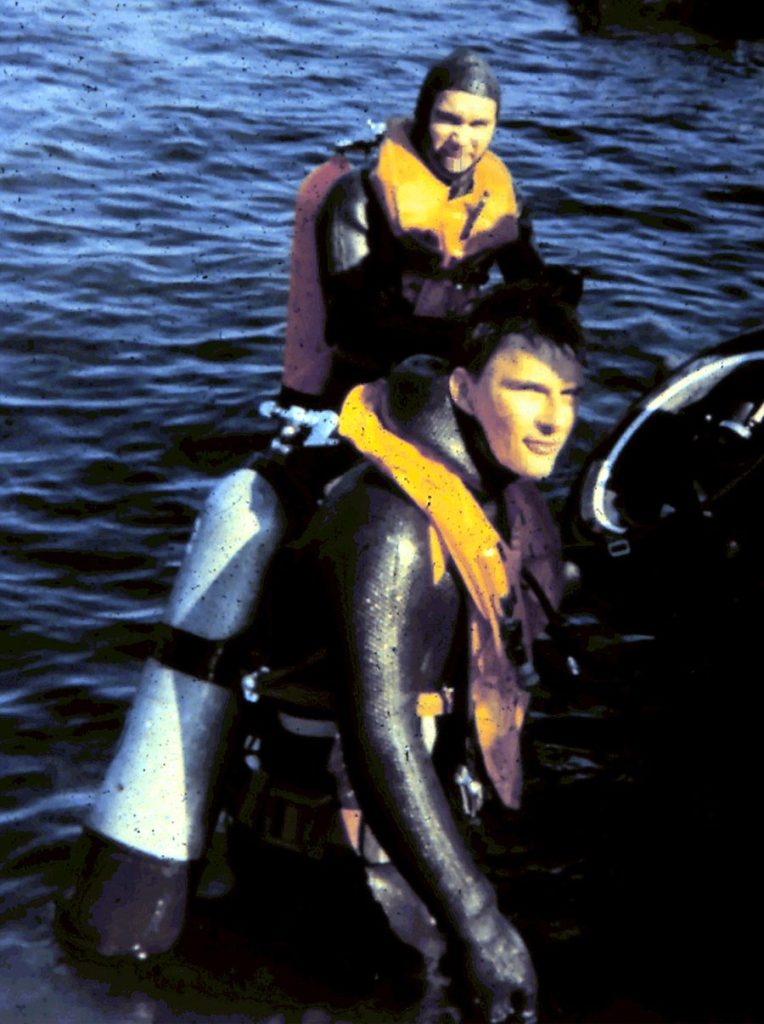
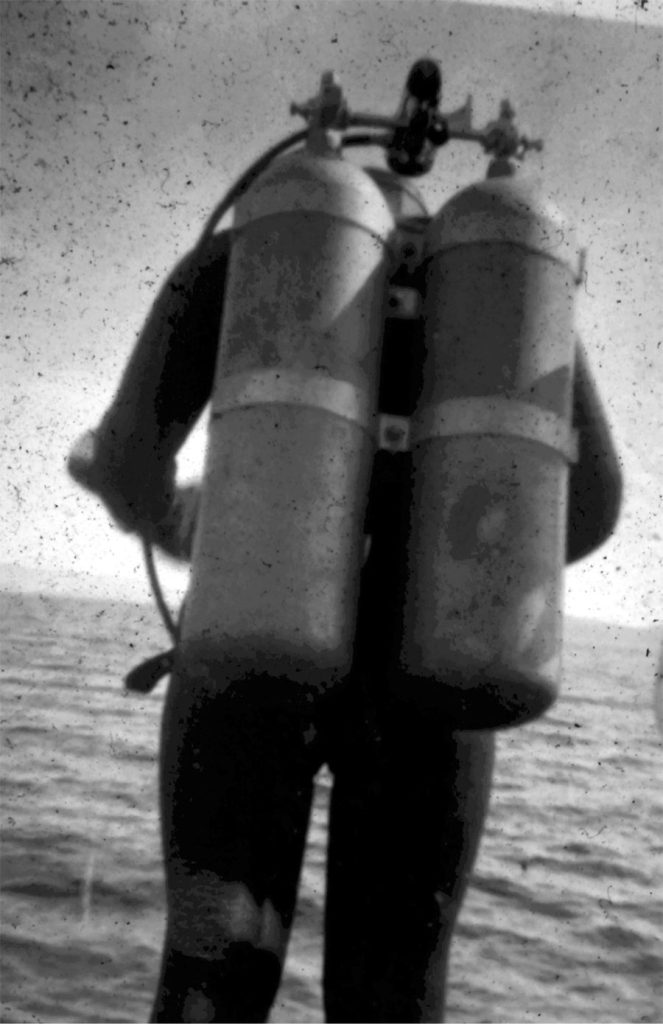
Fred then set up Deep Diving Systems his principal goal was to set up a marine contracting firm and raise the Gunilda.
He built several wet bells, purchased barges, cranes and purchased a Biomarine CCR 1000 rebreather and set out to dive Gunilda.
His first dives did not go well.
The umbilical that carried hot water to the suit had been coiled and he spun around in the water like a penny worlie gig.
Fred used the CCR 1000 for his first dives and decompressed in the wet bell. He wore a hot water suit.
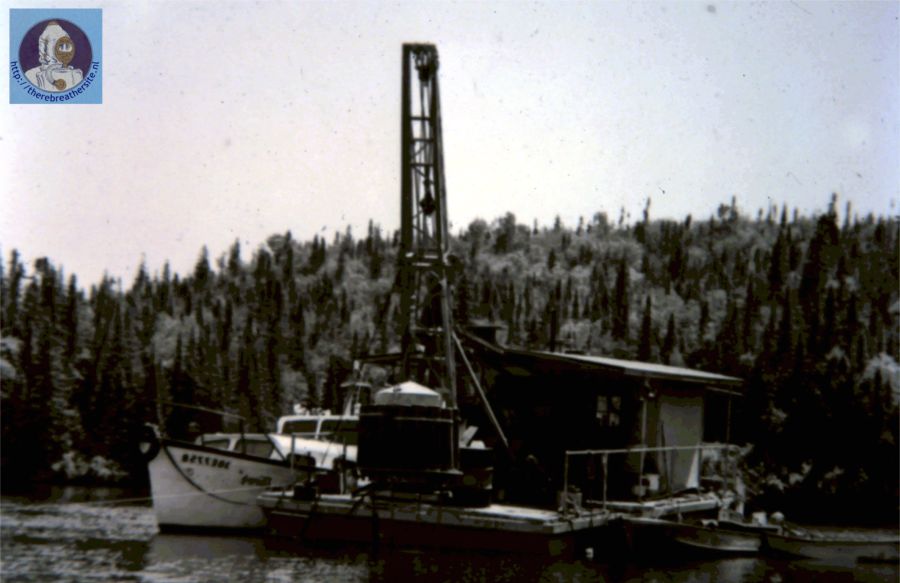
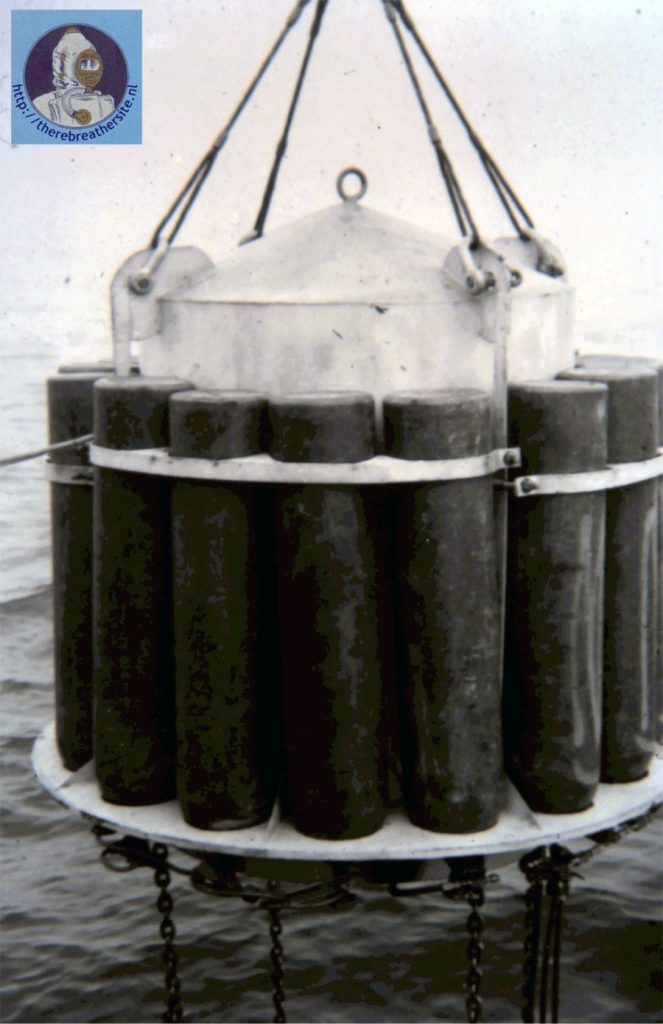
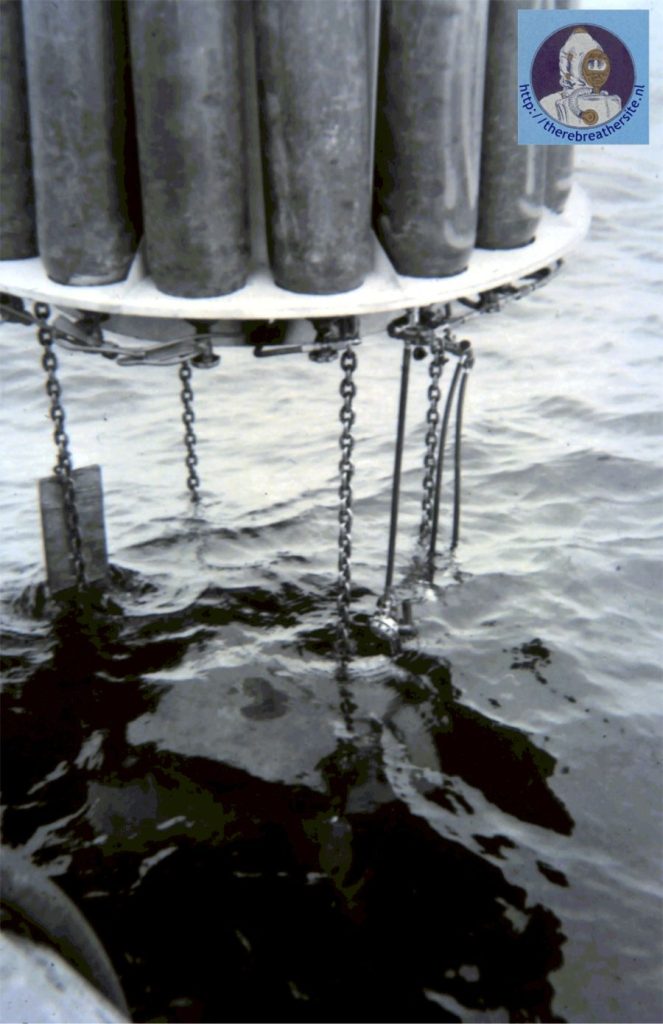
Fred Bronelle diving Gunilda
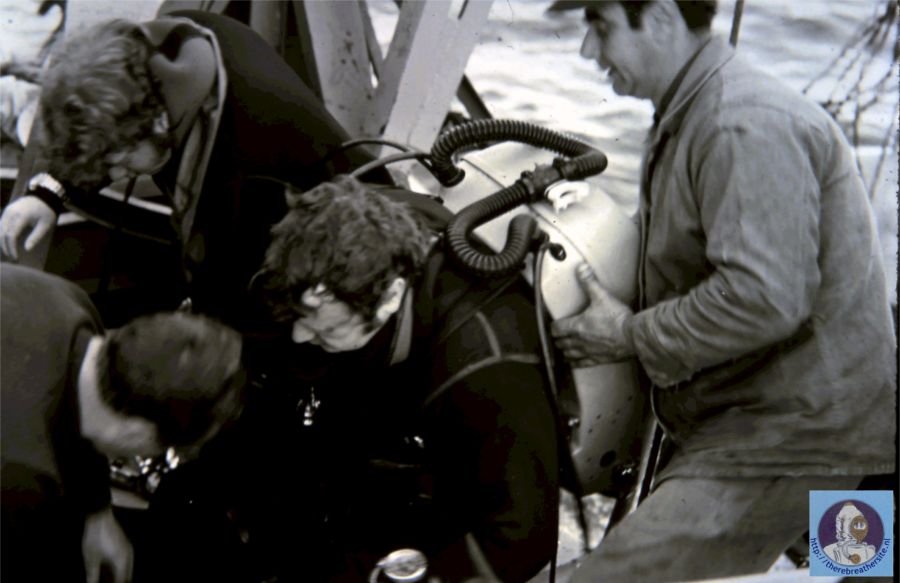
On the next dive they taped a rope to the hose and this took care of the spin problem and Fred made it to the upper part of the masts and rigging and brought back a piece of 15/16th fibre core wire rope.
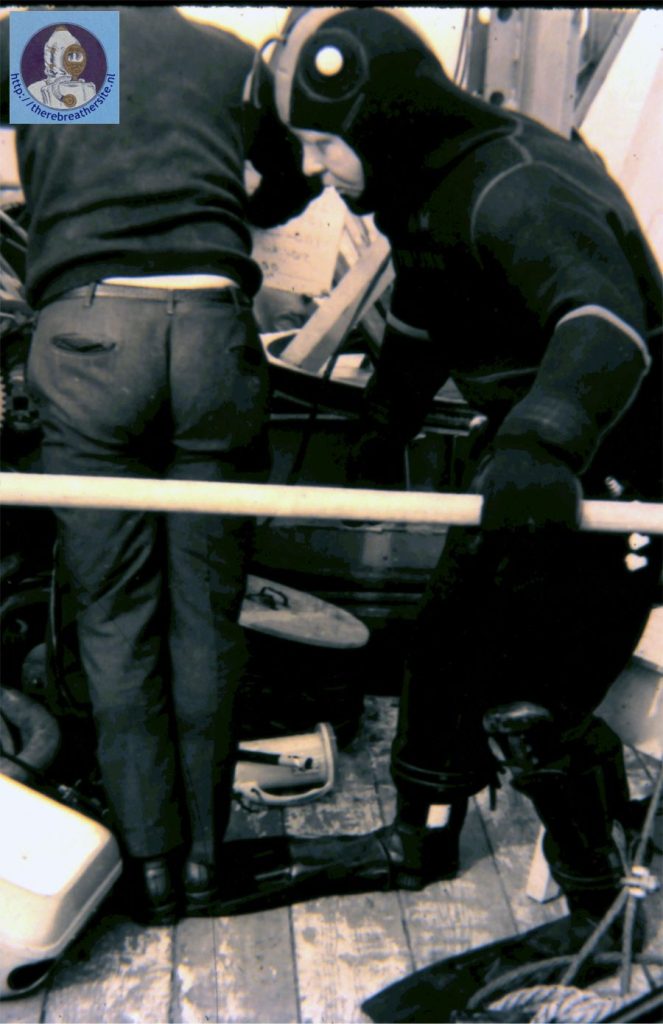
Fred’s next dive was eventful. The equipment worked properly and he toured the wreck.
The main deck is at a depth of 250’. He was overwhelmed at the site of Gunilda.
It had taken a great deal of time and effort to get on Gunilda and he was happy to be there.
He affixed a down line to the stern mast. He was so happy to be on the wreck he removed the rebreather mouth piece and kissed the stern mast. Unfortunately neglecting to close the diver shutoff valve for the exercise, he half flooded the CCR 1000.
He then grabbed one of the large Brass grates that covered one of the skylights and made his way to the wet bell and survived the dive.
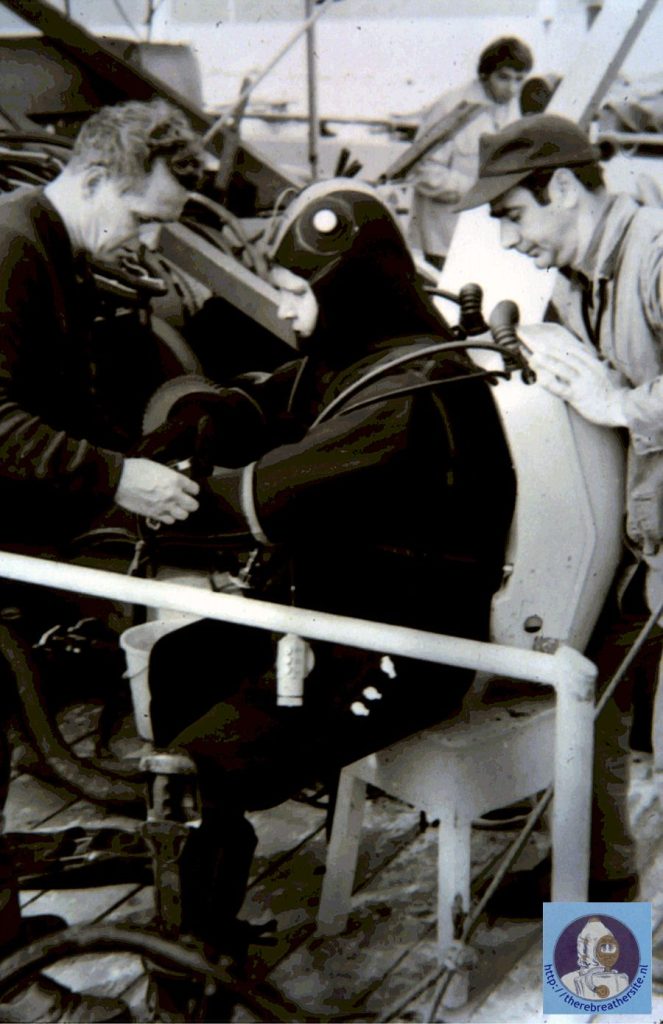
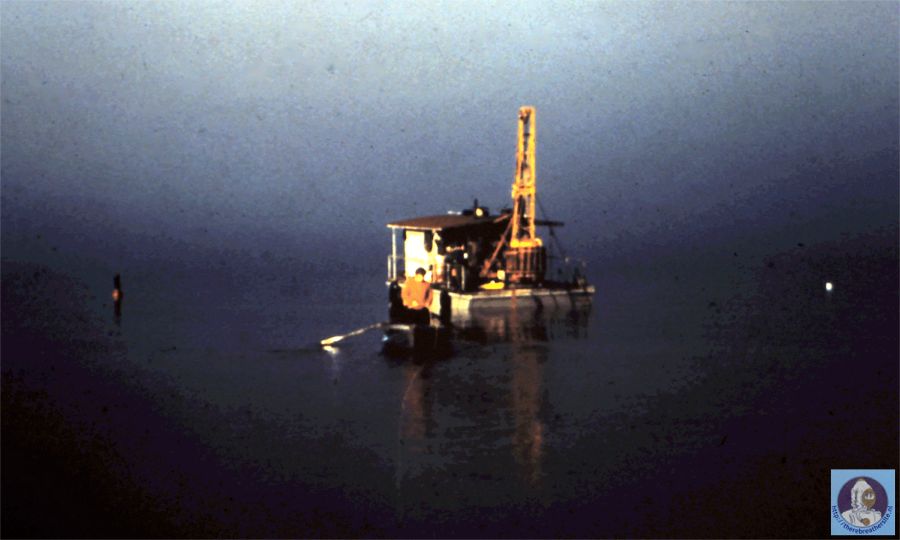
Fred’s Gunilda dives met with mixed reviews. Many were duly impressed by the accomplishment.
Mixed gas diving, and mixed gas rebreather diving were uncommon to that part of the world.
The Ministry of Labour did not take well to it and Fred had to upgrade and grow the business to if he planned to return to Gunilda.
He continued to grow the business. These are shots of the Deep Diving Systems facility in Thunder Bay.
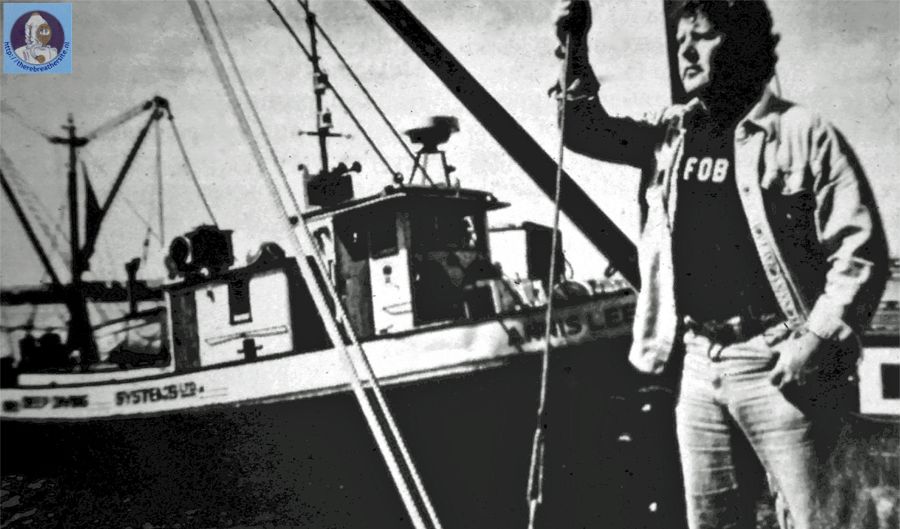
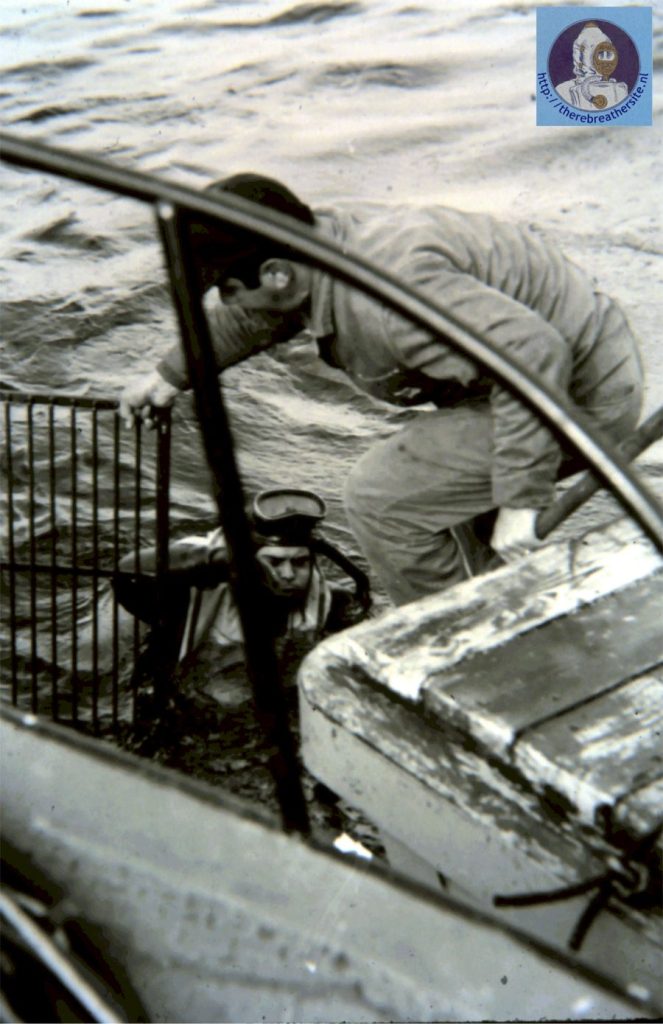
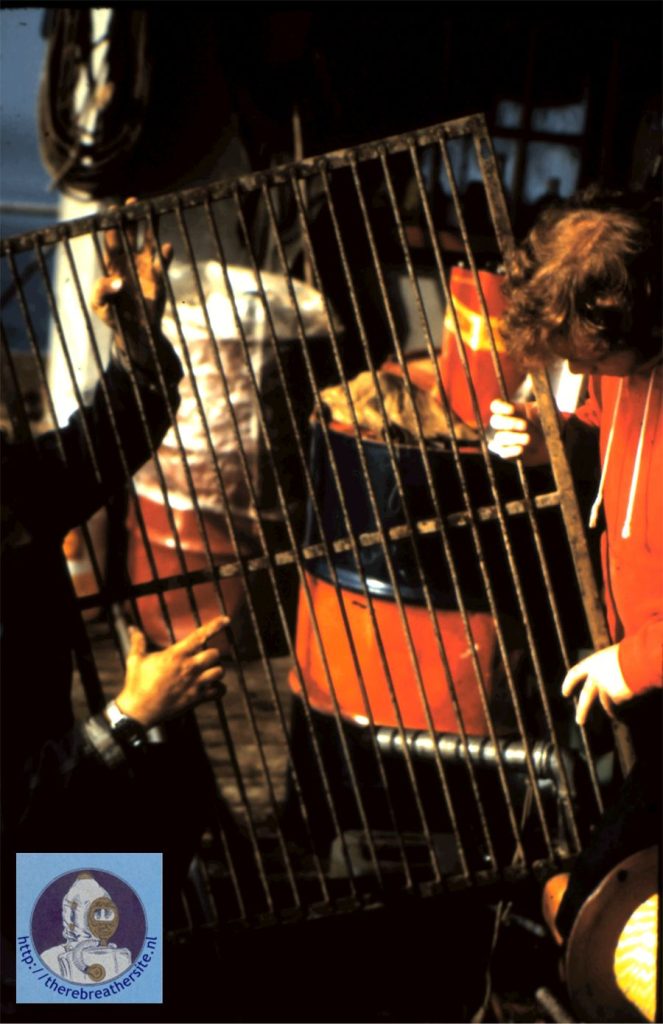
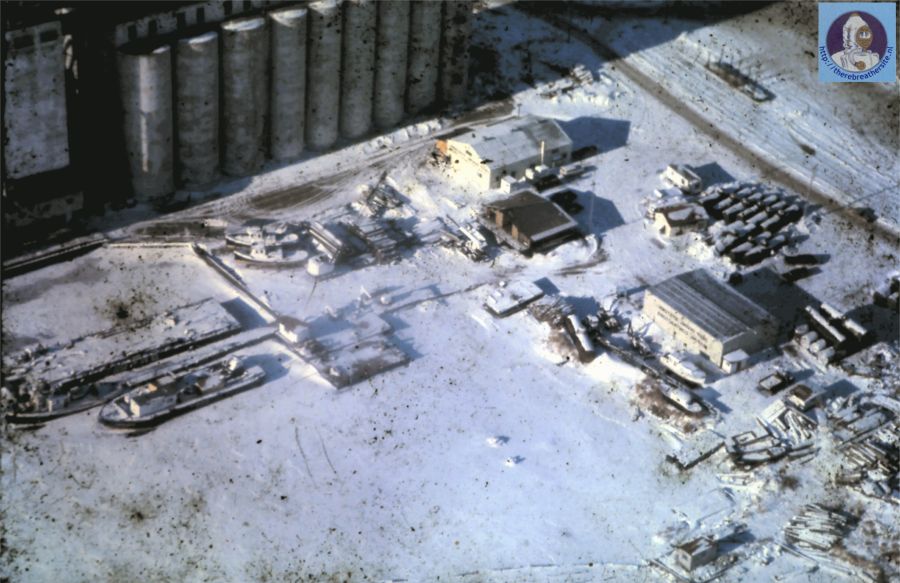
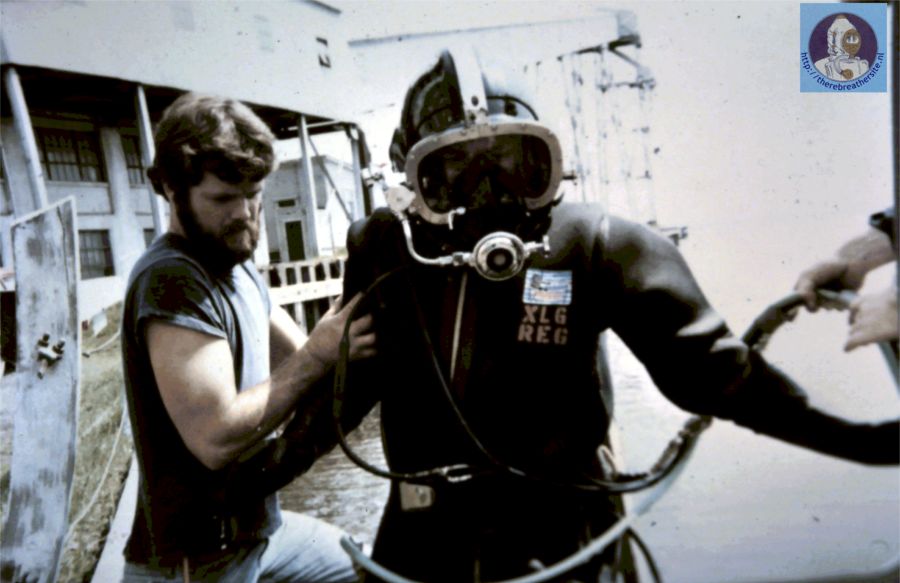
Infrastructure photographs:
In the interior of Deep Diving Systems office Fred had a spar and running light
He usually had three secretaries and they were all beautiful women
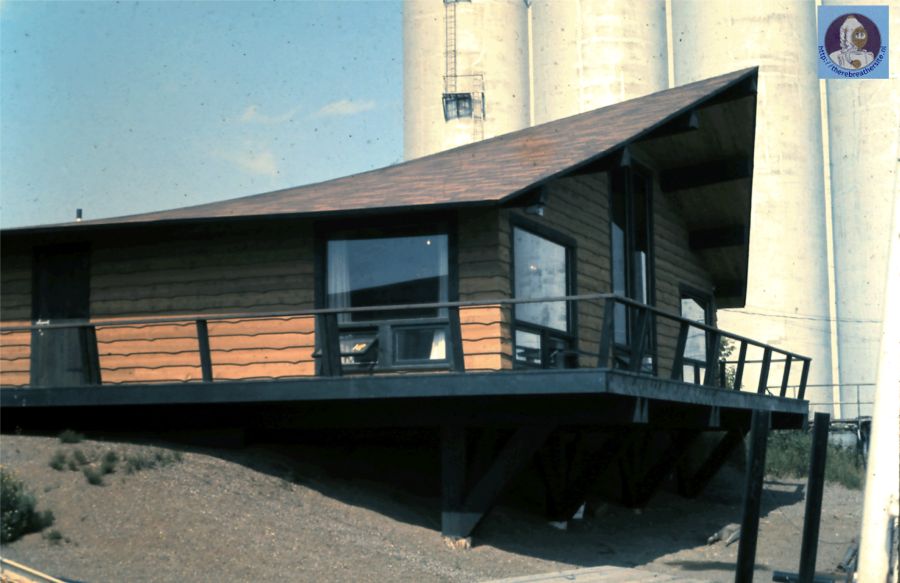
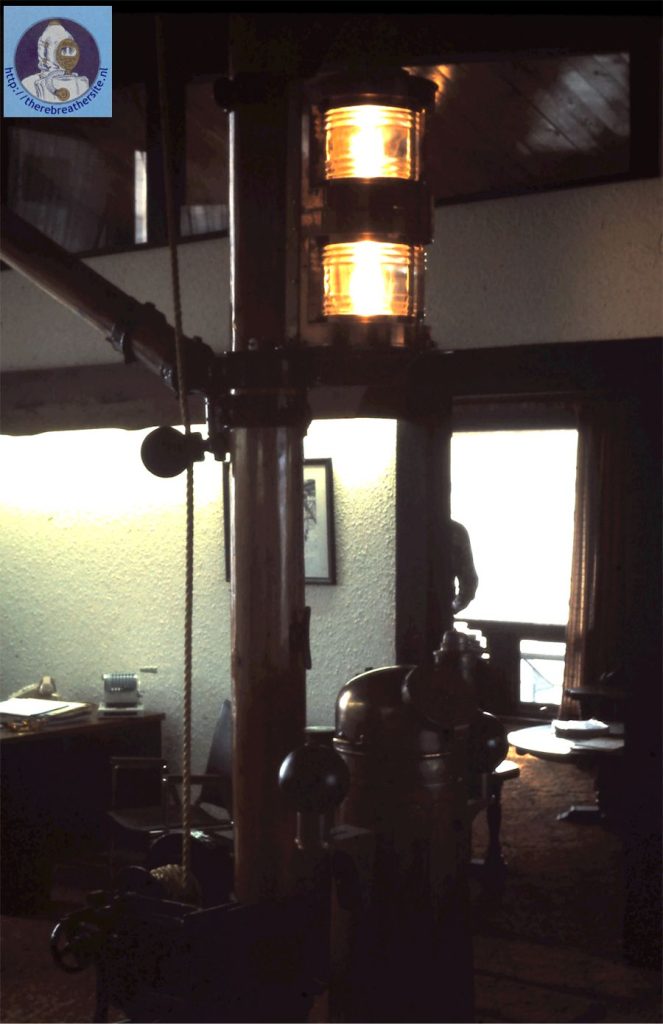
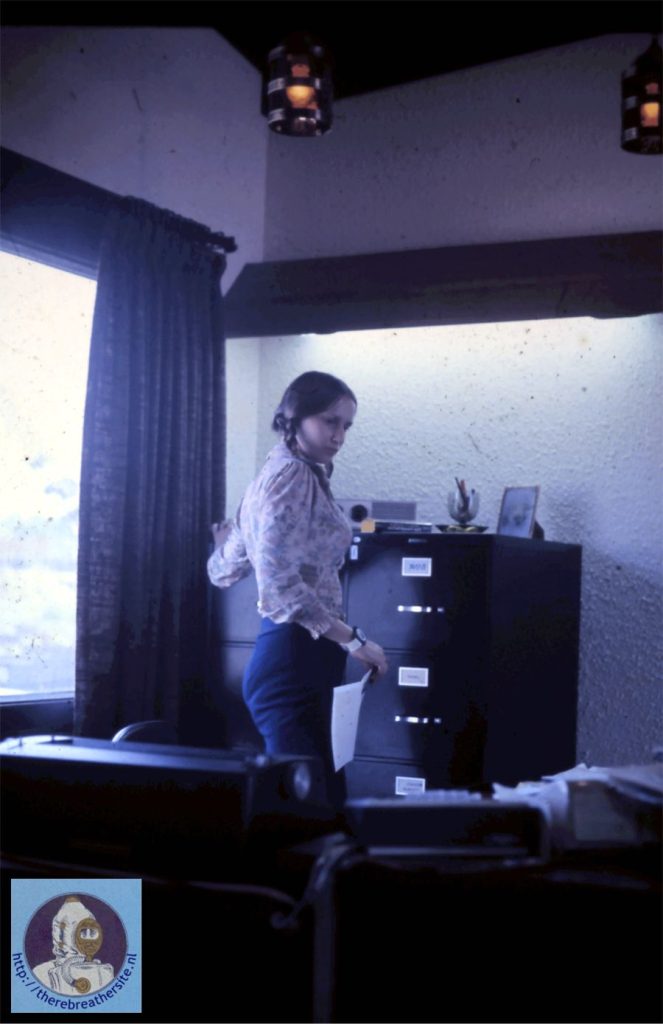
Deep Diving Systems continued to build diving equipment wet bells. Given the depth of the Gunilda around 245′ to 255 down at the bow, on the main deck, and the ability to establish a highly secure four point mooring system. To that end a giant piton with a four in head was hammered into heart of the McGarvy Shoal.
By nature, I never bother to look into another man’s business. I have no specific knowledge of investments or partnership arrangements outside my own. This was with KaBro marine long after Deep Diving Systems had fallen into receivership.
Fred then came up with a dry submarine, the Ugly~Tugly. The sub was small had a coning tower, the pilot sat over an observer lying prone. The prone diver had excellent observation lying stomach down and they were or had plans to fit an Ibeck pan and tilt camera system. They attended a trade fair held at the Port Arthur fair grounds. Fred took the sub and went to a trade fair on the gulf coast. He got a really good look at state of the art off shore commercial diving bells and Deep Diving equipment.
He told me he was disheartened and realised he was not even in the game. The Ugly~Tugly was alleged to have a problem with the welds. The wrong type of electrode was allegedly used. A contractual problem resulted with the welder.
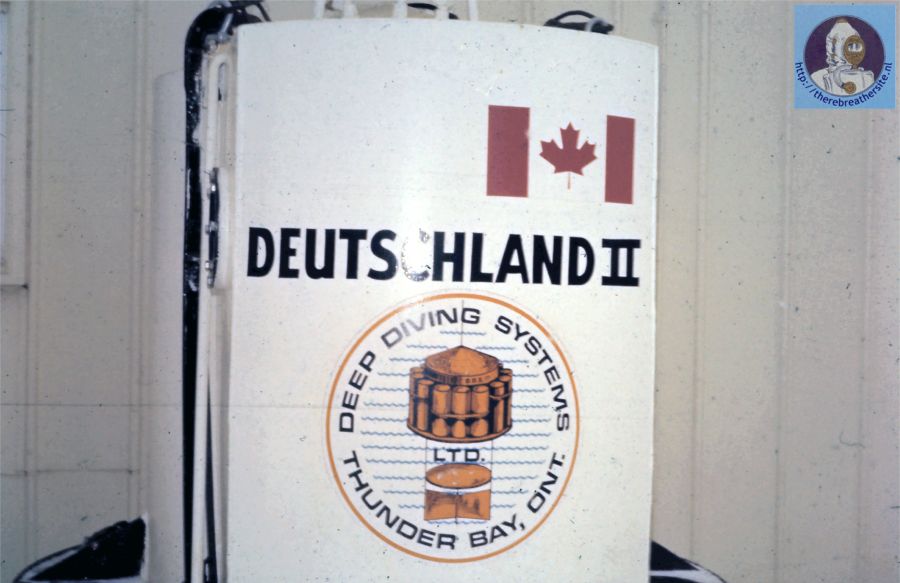
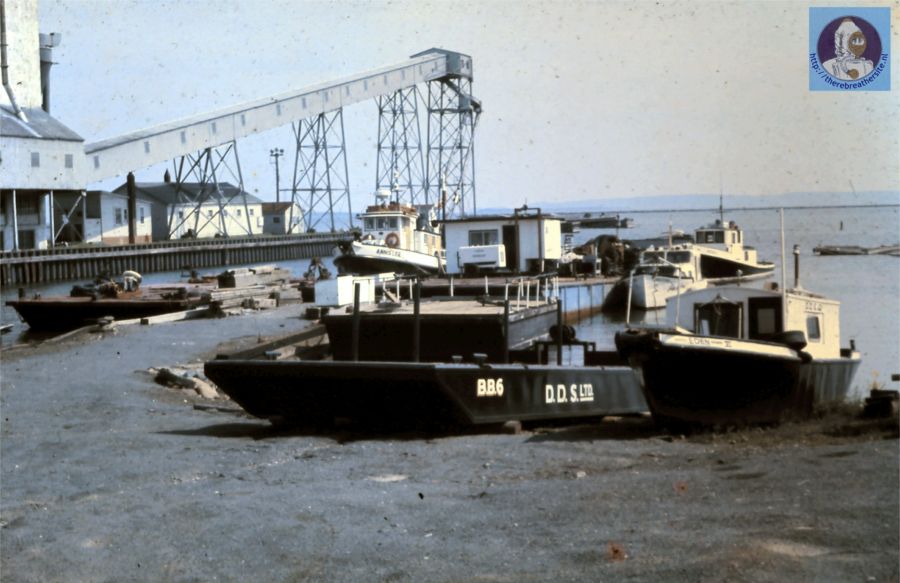
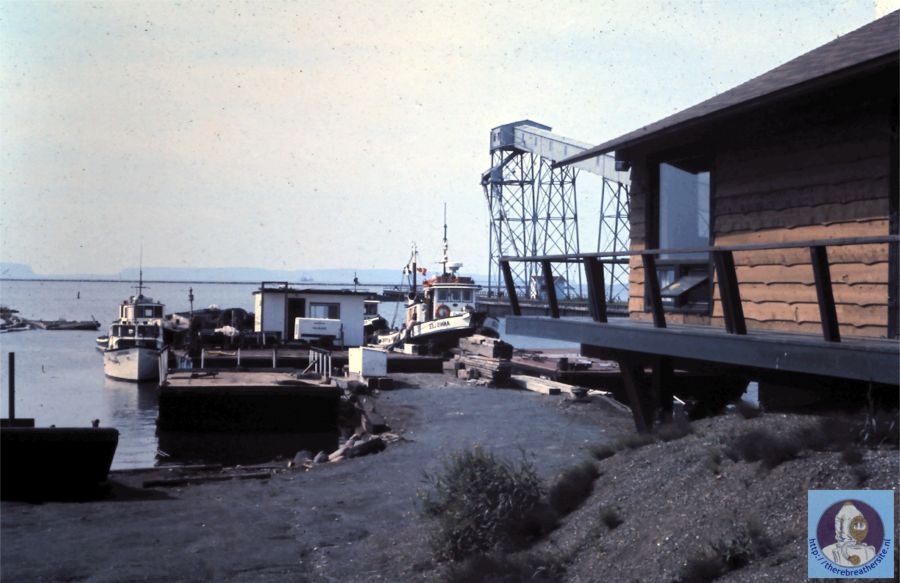
Through his purchase of his personal CCR 1000 he met Mr Gerard.
Mr Gerard was one of three partners that had formed Innerspace. For a time Innerspace and Deep Diving Systems entered into a partnership arrangement.
Innerspace had developed the PP1 system. A modified General Aquadyne hat mated to the CCR1000 rebreather. This solved one of Fred’s problems.
The hat allowed the diver to switch to open circuit and as he was dragging a hot water hose he moved into a conventional umbilical.
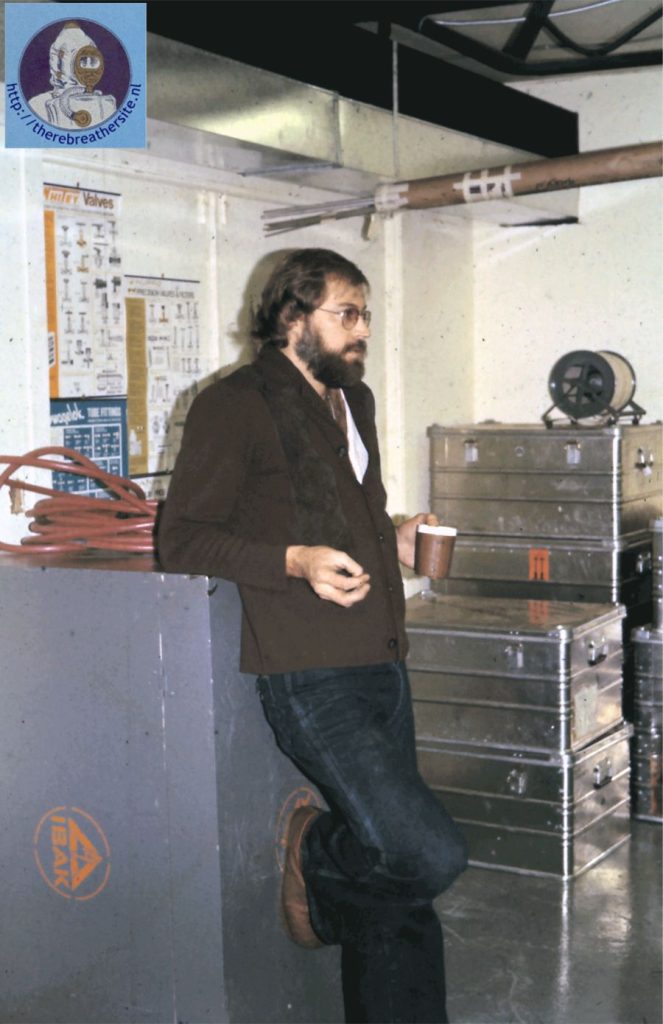
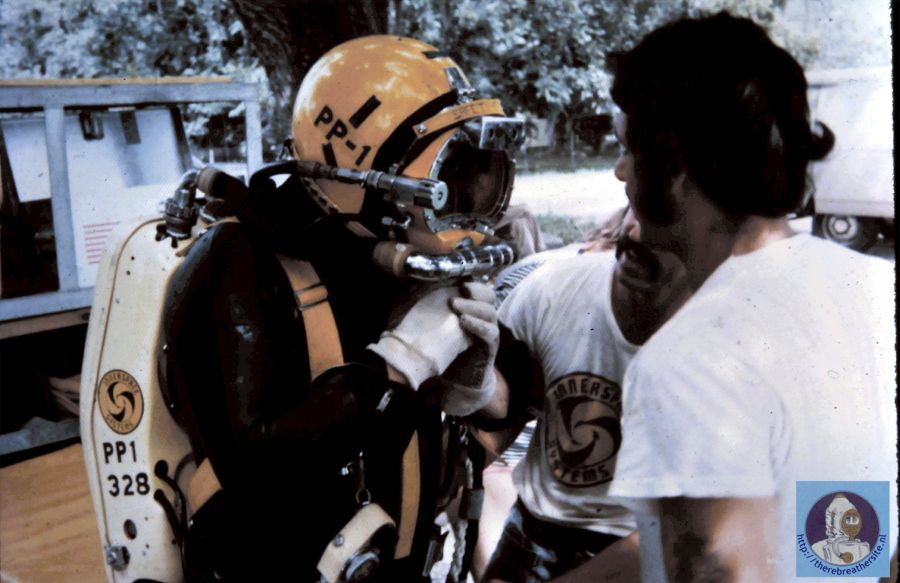
The most ambitious undertaking was Constructor. This was a dry bell that could be operated with three occupants to a depth of 3,000’.
It could be used as a bell and lock out two PP1 equipped divers to a depth of 1500 feet.
Many of the divers at Deep Diving Systems wanted to lift Gunilda but the company choose to wait for the completion of Constructor.
As far as dive bells go it was the Cadillac. You entered through the bottom hatch.
Three PPI systems were installed directly overhead and hats on the seat.
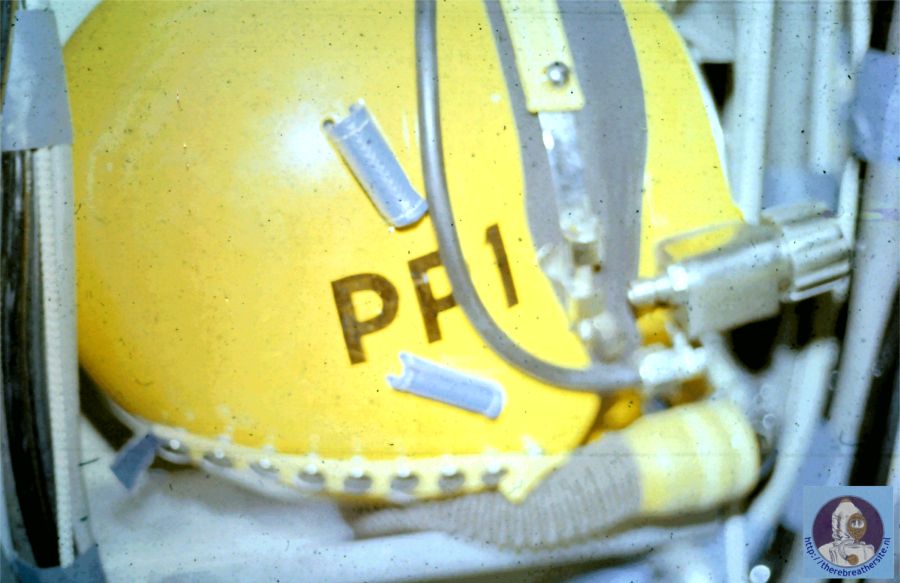
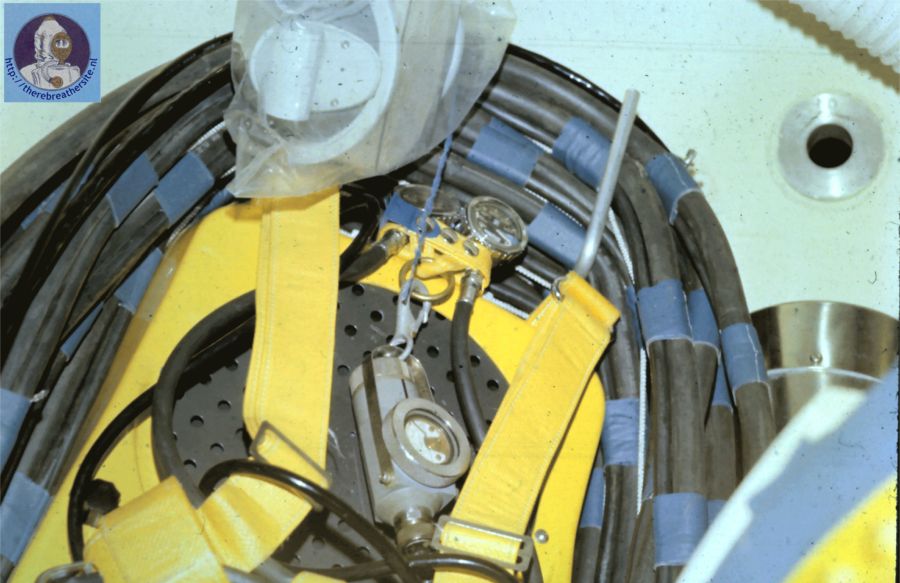
The master plan was to build a dive ship with saturations system around Constructor.
The situation was highly competitive. I remember Fred from an Aqua Y SCBA club meeting.
He had taken a course a year or so ahead of me from NAUI instructors Doug Elsey and Charles King Hague.
It is funny to reflect on, but Fred had difficulty with decompression tables and required additional lessons to finish the course.
As Fred went on in life so did his surviving instructor Doug Elsey.
Doug became an oceanneering student and one of the seven principal partners in Can Dive the largest commercial diving company in Canada. Doug’s region was the Great Lakes Saint Lawrence River and things were competitive. Doug attended with a Can Dive presence a submarine and a diver a Rat hat. On the west coast Can Dive partner Phil Newton was developing the Newtsuit.
Investment dried up. Deep air wreck divers began to dive the site and early Tec dives on trimix were done by Gerry Buchanan.
Mr. Buchanan made the observation that the safe door in the chart room appeared to be open.
When Deep Diving Systems lost support of financial backer the Constructor was sold to Can Dive and in Phil Newton’s hands.
The manipulators were used on other devices and Phil used it for a pressure test tank for years.
It was eventually sold to the Australian navy to be used with a dive ship for submarine rescue.
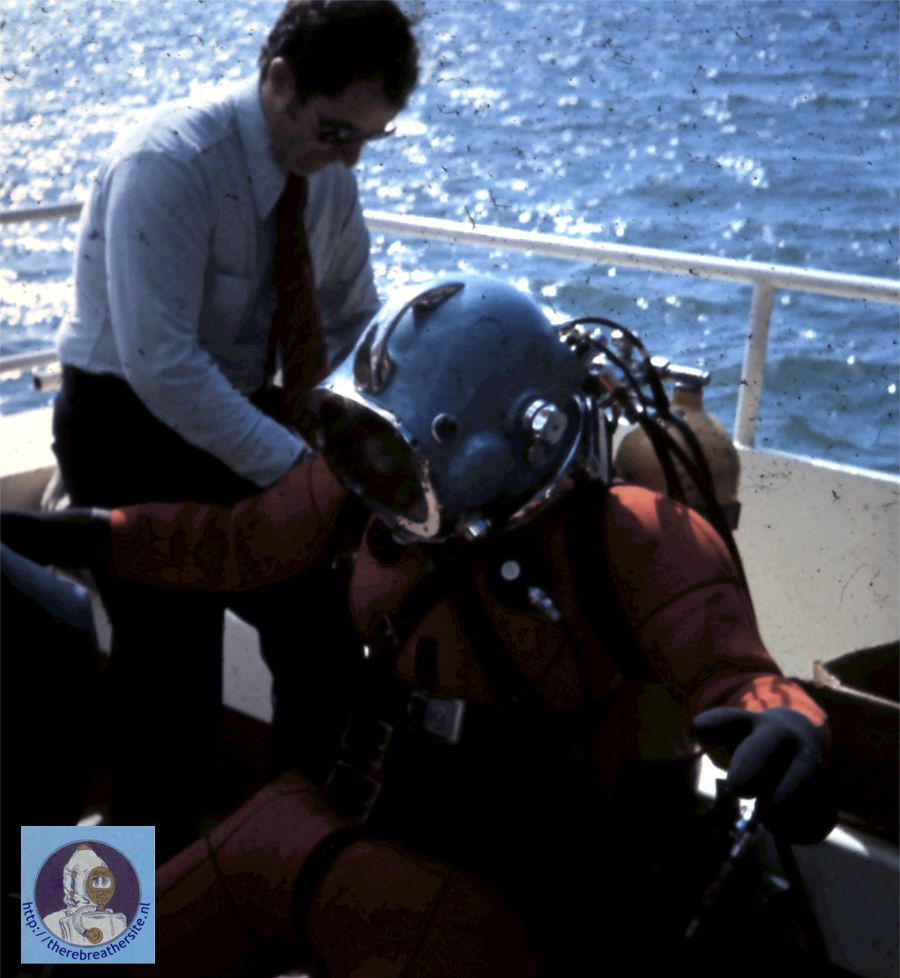
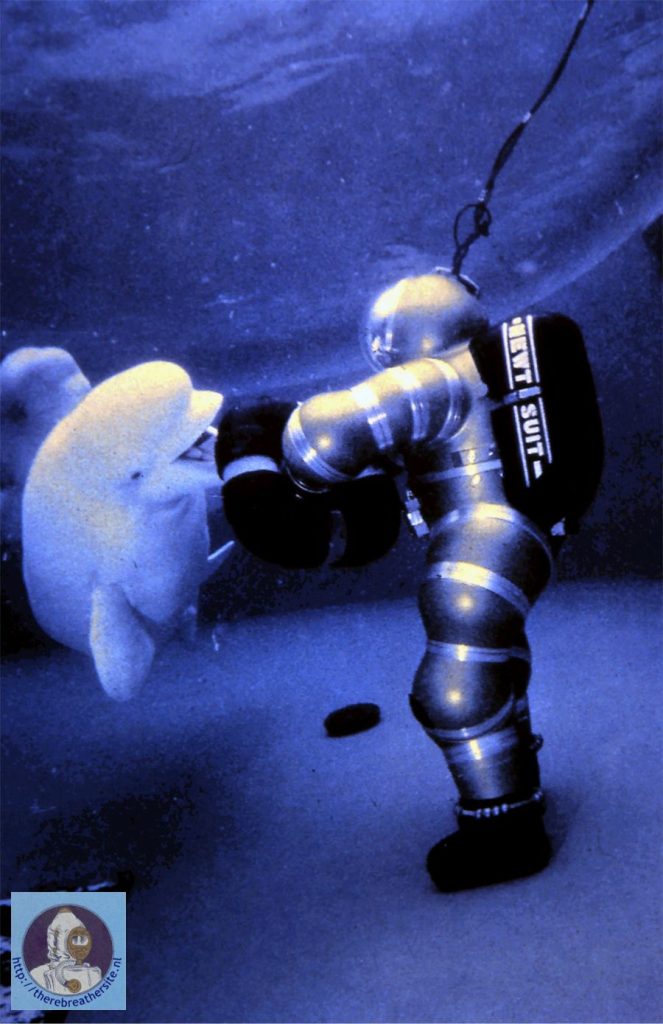
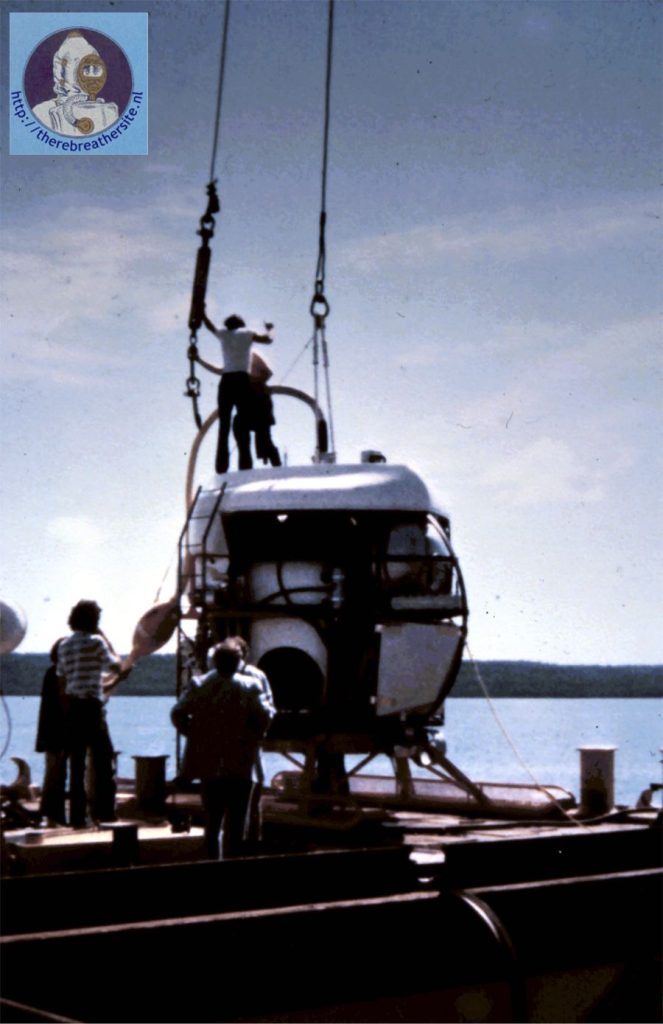
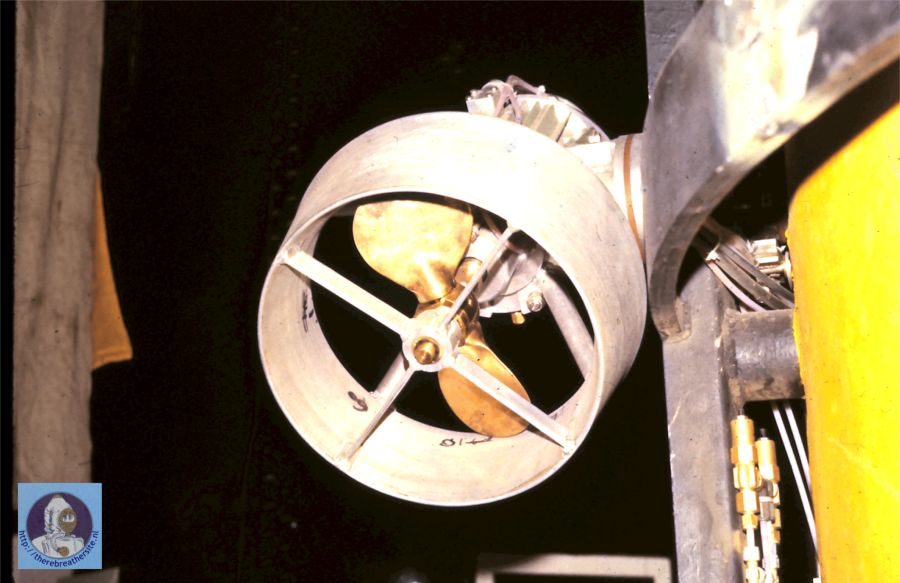
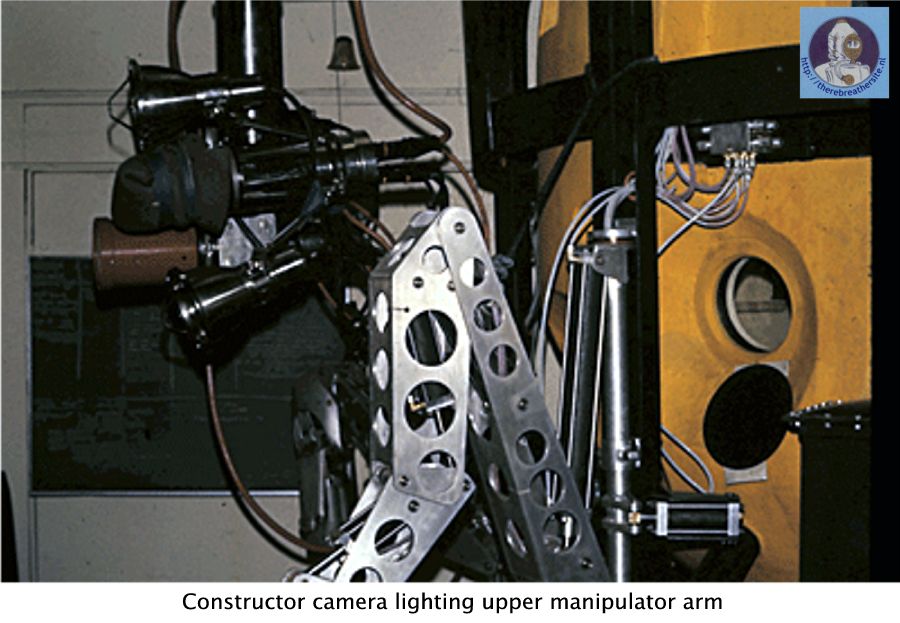
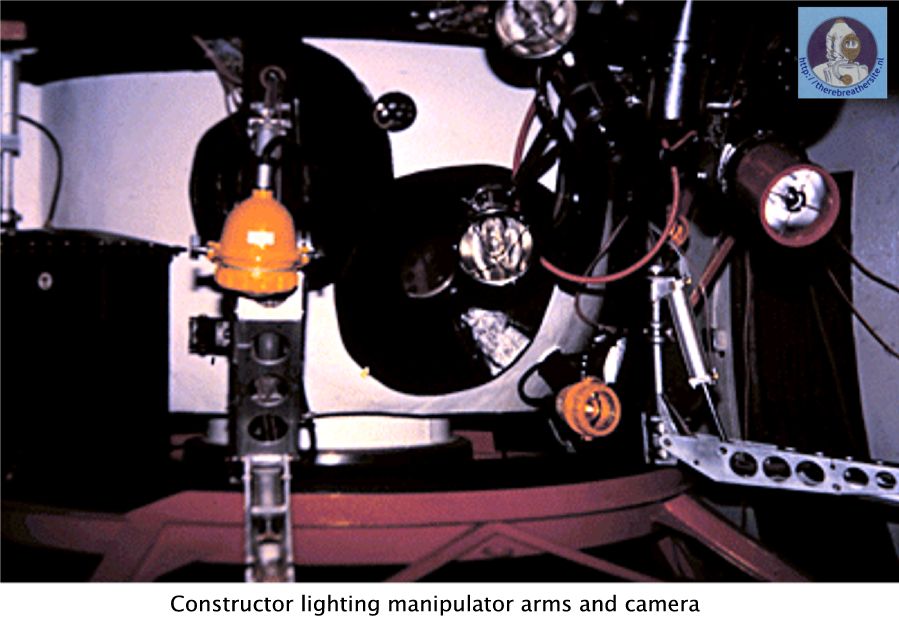
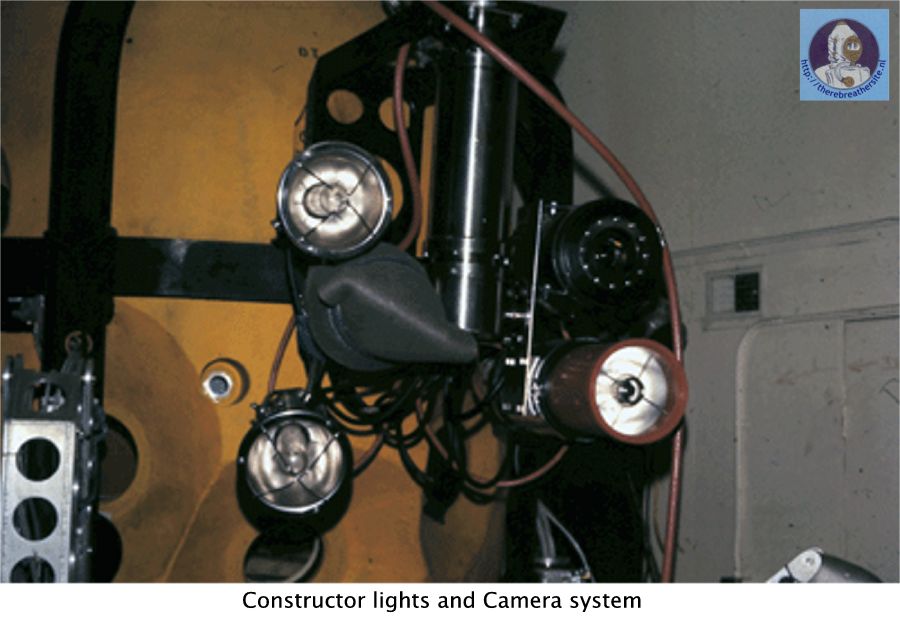
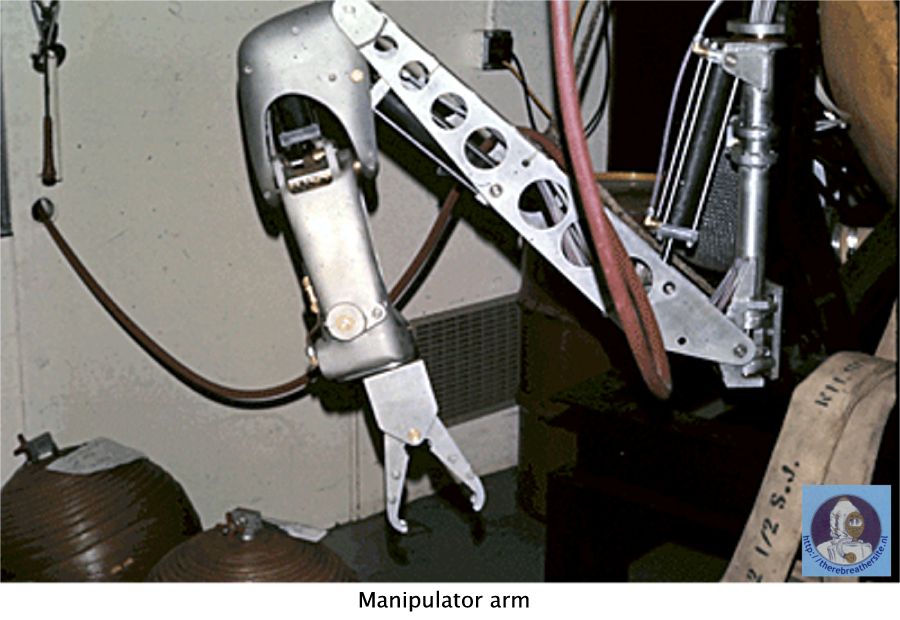
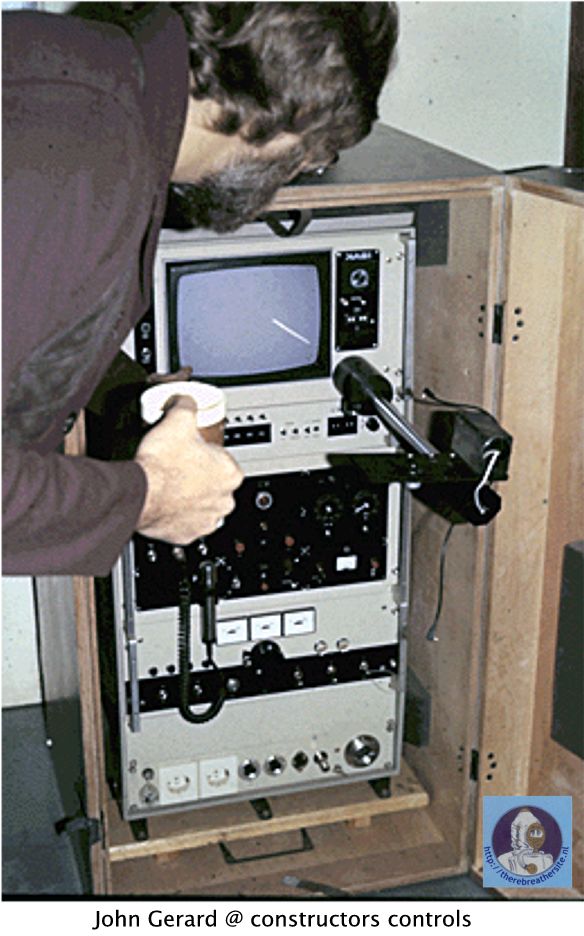
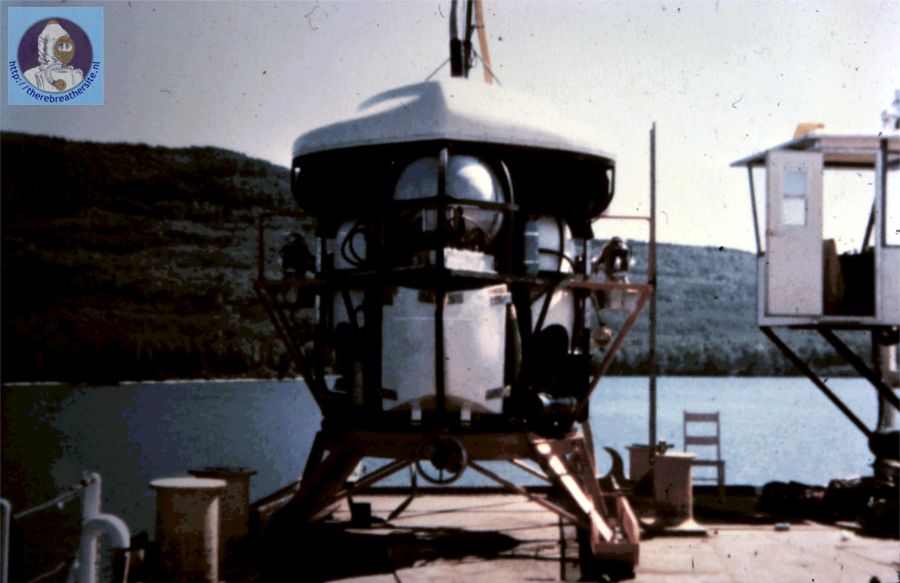
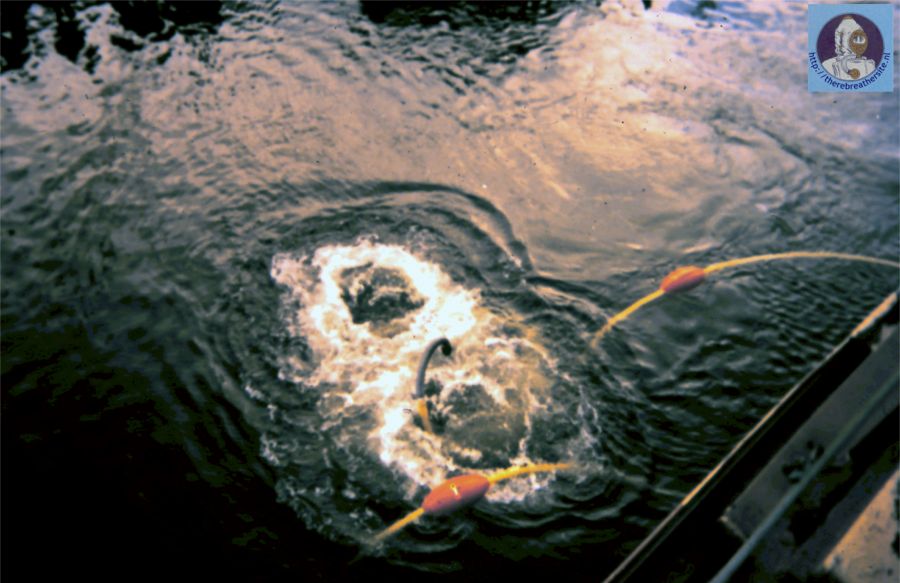
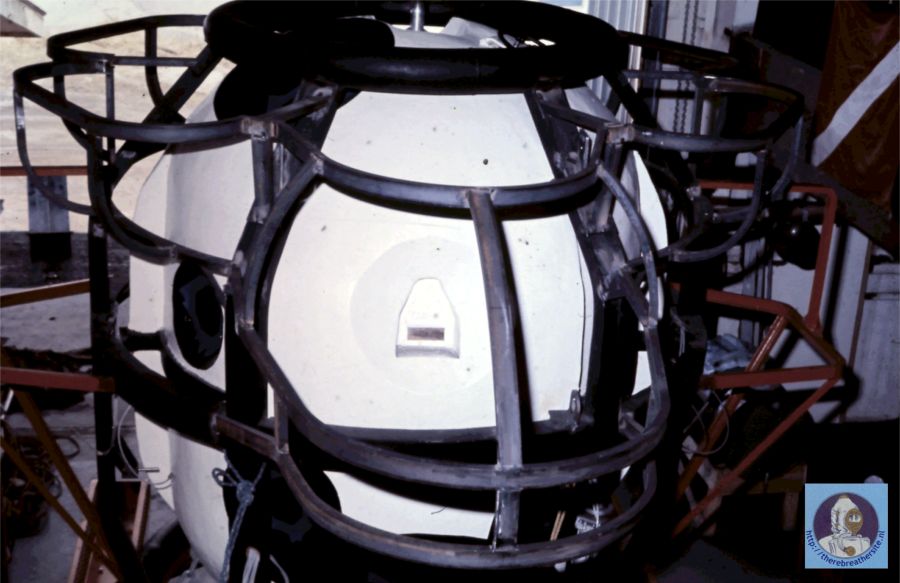
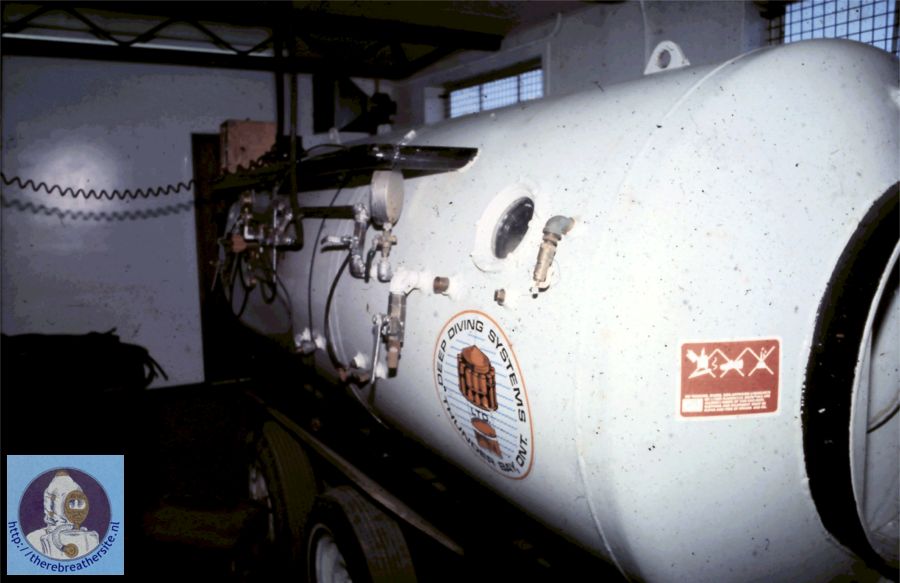
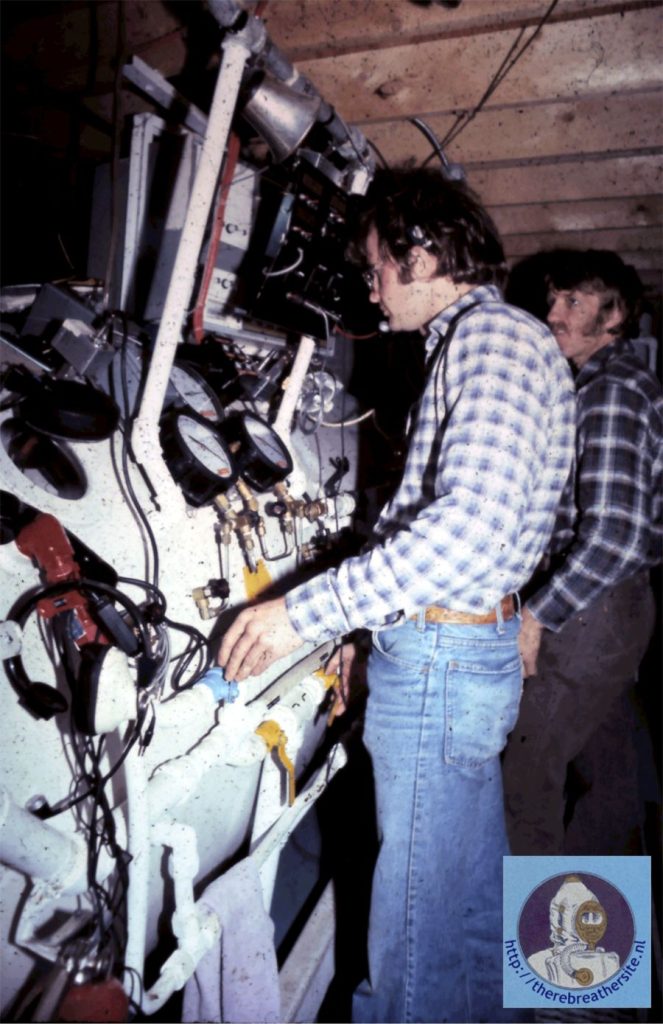
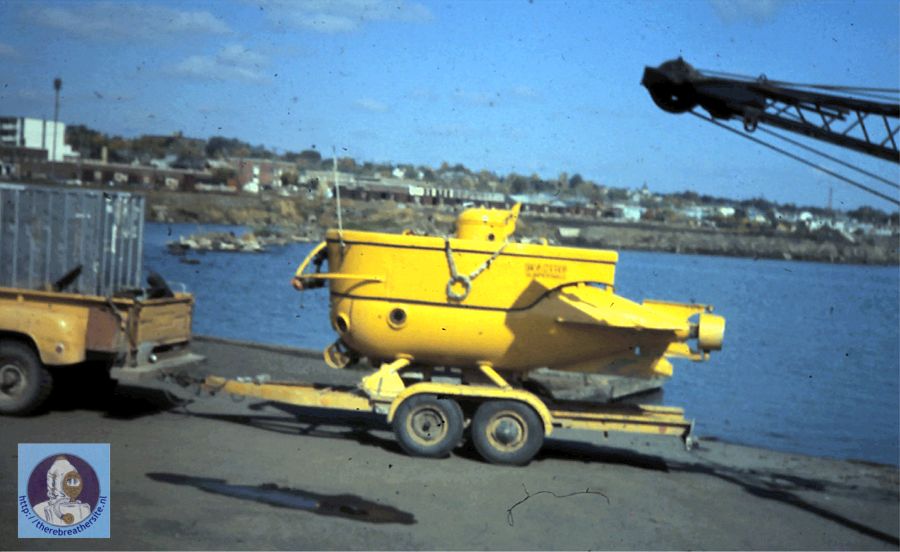
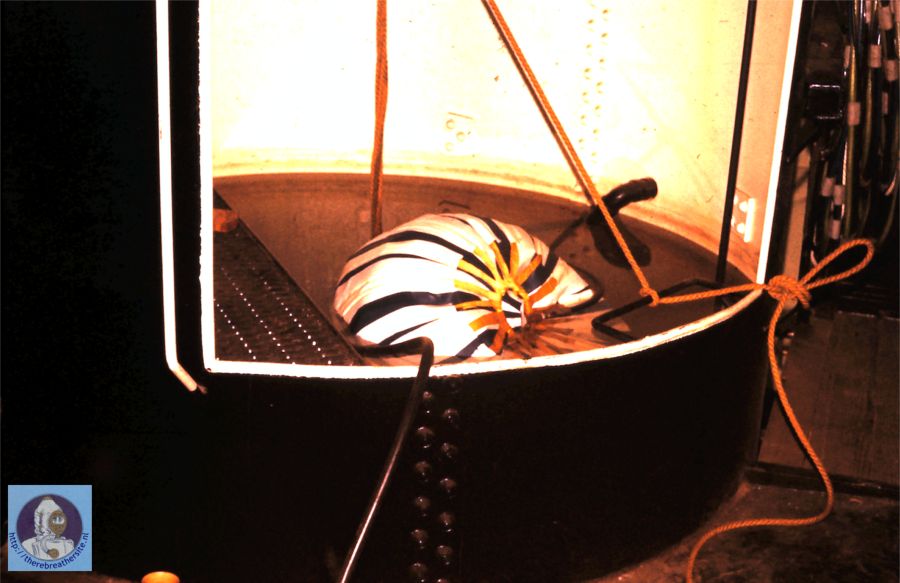
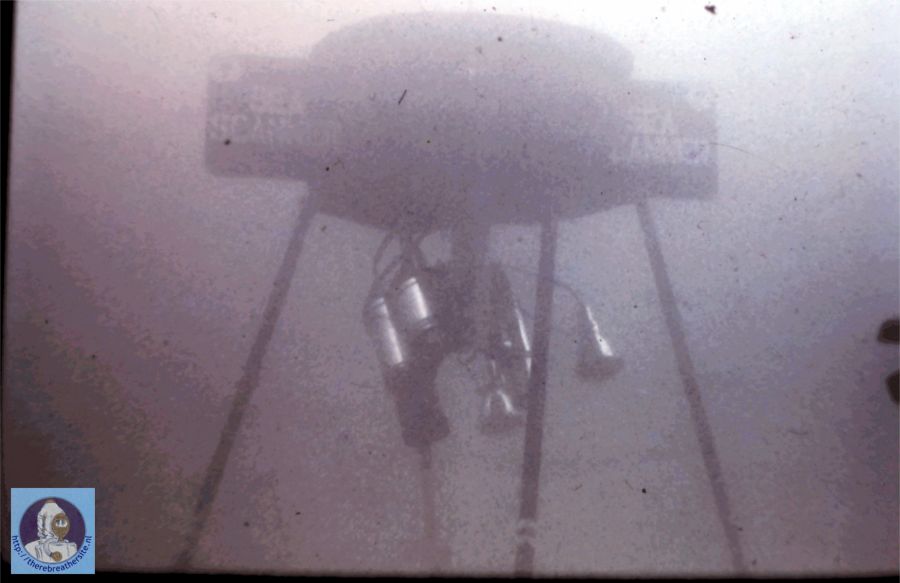
Sea scanner, The lost diver in the next pictures is King Hague and was found with the Ibex Camera system. They built Sea Scanner but removed the camera system and had it in a slightly different configuration when King was found. Fred had though that King would be found inside the wreck but was found close to the wreck on the Port side near the stern chain plate.
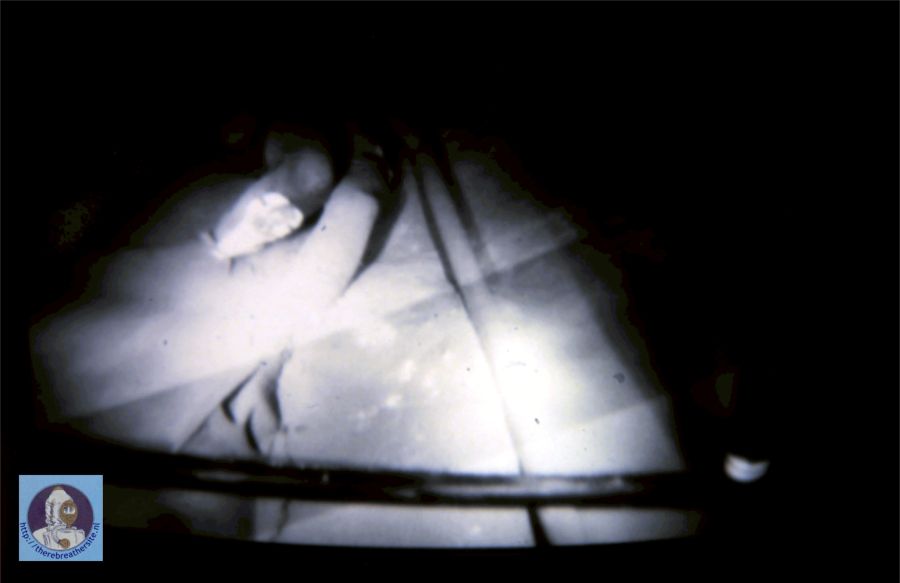
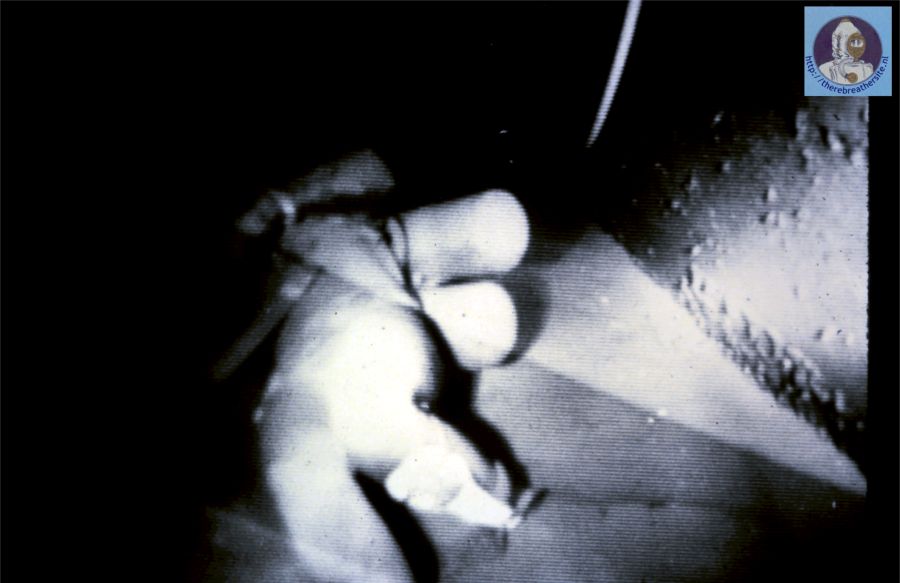
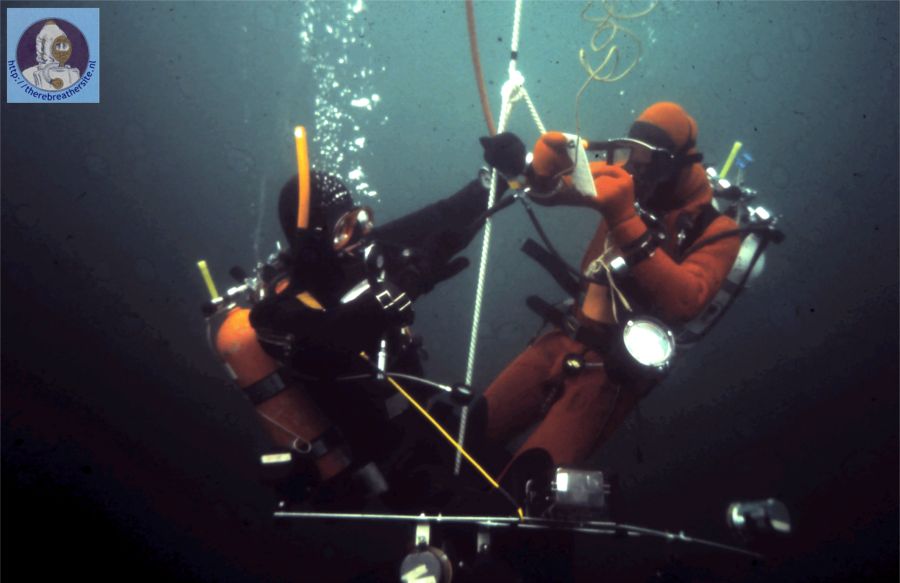
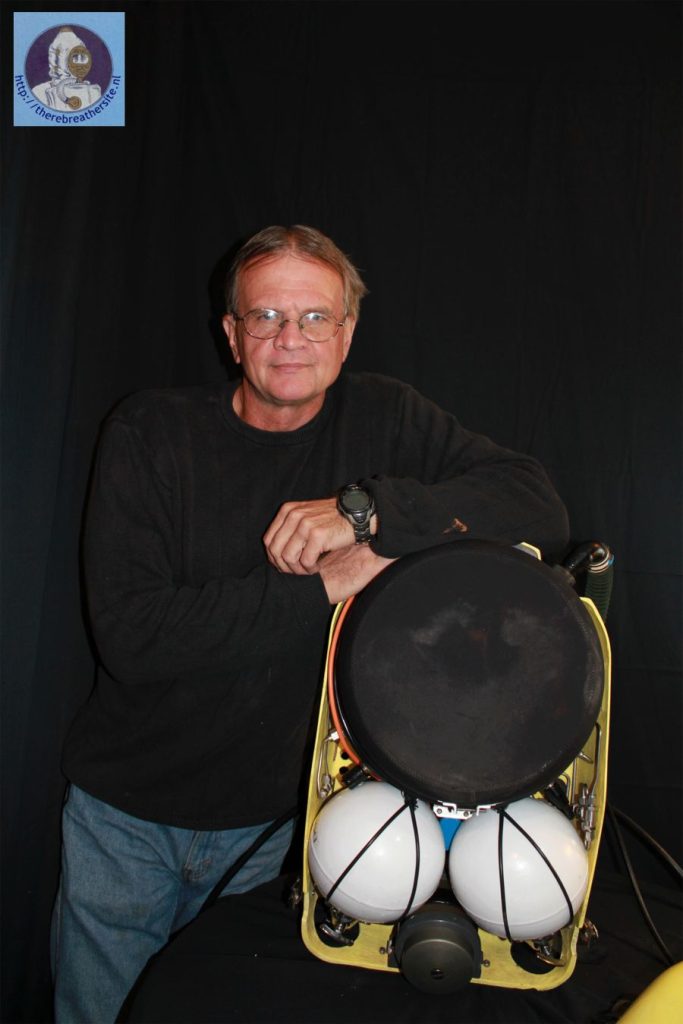
So far about Gunilda, again Scott thank you for all the work and also for scanning all these old pictures.
I am sure many people in the diving community will like these great pictures!!
Do you have additional information about the Gunilda, about the diving systems please send me an email @jw.bech@quicknet.nl
first published 22-12-2012
Gunilda’s cracked dinner bell,
A.K.A. William Lamon Harkness’ cracked bell.
Another fine Gunilda McWilliam bell story. I had a note from DandyDon on ScubaBoard.com and took a dive into the deep dark and murky waters of eBay to acquire a dinner bell that was used on the Gunilda. The bell is large and loud. It is seven inches in diameter at the lip and stands eleven inches tall and weighs 1lb. 1.35 oz. (75mm diameter, 80mm tall, 1399 grams). It had to be loud enough to be heard in all parts of the ship, and as the vessel had a steam engine and boiler room this was the bell they picked for the job. It could also be used for fire or general alarm purposes.
In all contemporary North American published accounts of the Gunilda, including my own, only about a third of the Gunilda story is told. This bell travelled the world. The family that owned the vessel first were in the textile business. The Gunilda was used the same way a large company would use a corporate jet. It had travelled to Finland, Norway, Russia, the USA and Venezuela before being sold American in 1904.
The bell is also cracked. During the time the vessel was owned by William Lamon Harkness and birthed in New York the bell was taken out of service but it was a curiosity and it was not thrown away or melted down. William Lamon Harkness was a philanthropist and made several large donations to Yale University, I think there may still be a building there with his name on it. There is also a Harkness or was museum and the bell may have been there but it may not have been in the collection. The bell was in storage for a time and ended up being sent to the museum. It ended up out of collection and was finally acquired by the vendor I purchase it from at an estate sale. Given Harkness’ personal involvement in the loss of the Gunilda it may have been in poor taste to have Mr. Harkness’ cracked bell from the Gunilda a ship that was lost due to poor decision making around as an exhibit.
The bell is adorned with the finest of masking tape labels and a hand written not that reads, “Dinner Bell Used on Harkness Yacht.”
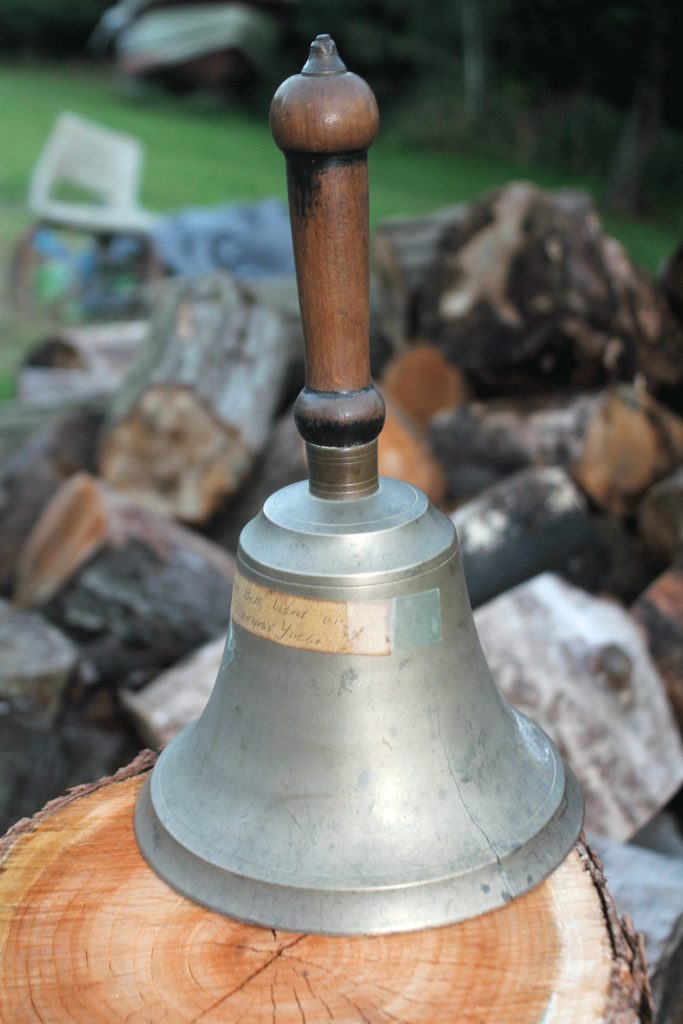
Dear JW,
I read with interest your article on the site http://www.therebreathersite.nl/ and your collaboration with an archeologist (Scott) to write this story. This is also what decided me to write directly to you.
A few years ago (I am French but I used to live in the US for some time), I found a photoalbum in a flea market in NYC that was left among many other photo albums from different years…. and decided to buy it as the seller did not really care about it… intrigued by the name on the cover (Gunilda in gildered letters) as well as the high quality, freshness and “spontaneity” of its images which it no so common in the beginning of the twentieth century (it seems this album probably belonged to the Harkness family or at least very close friends as it spans almost over a decade of cruises abroad this ship in places such as Martinique/Caribbean’s, the East Coast and of course the Great Lakes… and these people had enough money to take snapshots the same way lets’ say, we are today using digital cameras in a way).
Looking on the internet, I discovered the fabulous (and tragic) destiny of this ship and the importance of these pictures for the historians. I was finally able to scan them and put them on the internet and thought that it was important to share them, especially on an archeological and historical point of view.
So if you are interested, you go can go to the www.gunilda.fr adress to look at them (by clicking on the picture on the first page). The gallery may take some time to load as I did not take the time yet to optimize the size of the pictures for the web.
Hope you enjoy
Best Regards,
Rémi Frayssinet
Thanks Remi for this fantastic photoalbum!!
Other interesting links to Gunilda:

Therebreathersite was founded by Jan Willem Bech in 1999. After a diving career of many years, he decided to start technical diving in 1999. He immediately noticed that at that time there was almost no website that contained the history of closed breathing systems. The start for the website led to a huge collection that offered about 1,300 pages of information until 2019. In 2019, a fresh start was made with the website now freely available online for everyone. Therebreathersite is a source of information for divers, researchers, technicians and students. I hope you enjoy browsing the content!
